2018-01-25 - Nº 143

Editorial
Esta é a Newsletter Nº 143 que se apresenta com o mesmo formato que as anteriores. Se gostar da Newsletter partilhe-a!
Todas as Newsletters encontram-se indexadas no link.
Esta Newsletter tem os seguintes tópicos:
Faz hoje anos que nascia, em 1627, Robert Boyle. Este químico e filósofo irlandês-inglês notou através das suas experiências sobre as propriedades dos gases e sua exposição de uma visão corpuscular da matéria que era um precursor da teoria moderna dos elementos químicos. Ele era um membro fundador da Royal Society of London. De 1656 a 68, residiu em Oxford, onde Robert Hooke, o ajudou a construir a bomba de ar. Com esta invenção, Boyle demonstrou as características físicas do ar e a necessidade de ar para a combustão, respiração e transmissão de som, publicado nas Novas Experiências Físico-Mecânicas, Tocando a Primavera do Ar e seus Efeitos (1660). Em 1661, ele anunciou à Sociedade Real sobre a relação do volume de gases e a pressão (Lei de Boyle).
Faz também anos hoje que nascia, em 1736, Joseph-Louis Lagrange. Este matemático italiano-francês fez grandes contribuições para a teoria dos números e para a mecânica analítica. O seu livro mais importante é o Mécanique analytique (1788, "Mecânica analítica"), o livro sobre o qual todo o trabalho posterior neste campo se baseia. Lagrange foi um dos criadores do cálculo das variações, derivando as equações de Euler-Lagrange para extremos de funcionais. Ele também estendeu o método para levar em consideração possíveis restrições, chegando ao método dos multiplicadores de Lagrange. Lagrange inventou o método de resolução de equações diferenciais conhecidas como variação de parâmetros, cálculo diferencial aplicado à teoria das probabilidades e atingiu trabalhos notáveis sobre a solução de equações. Ele provou que todo número natural é uma soma de quatro quadrados. O seu tratado "Theorie des fonctions analytiques" colocou alguns dos fundamentos da teoria grupal, antecipando Galois. No cálculo, Lagrange desenvolveu uma nova abordagem para interpolação e séries de Taylor. Ele estudou o problema de três corpos para a Terra, o Sol e a Lua (1764) e o movimento dos satélites de Júpiter (1766) e, em 1772, encontrou soluções especiais para esse problema que produzem o que agora são conhecidos como pontos Lagrangianos. Mas, acima de tudo, ele é mais conhecido por seu trabalho em mecânica, onde ele transformou a mecânica newtoniana num ramo de análise, a mecânica lagrangiana como agora é chamado, e apresentou os chamados "princípios" mecânicos como resultados simples do cálculo variacional.
Faz igualmente anos hoje que nascia, em 1878, Ernst Alexanderson. Este engenheiro sueco-americano foi o inventor de equipamentos electrónicos cujas contribuições foram importantes para a primeira transmissão de rádio ao vivo. Ele desenvolveu um alternador de alta frequência (um dispositivo que converte corrente contínua em corrente alternada) capaz de produzir ondas de rádio contínuas e, assim, revolucionou a comunicação por rádio. Mais tarde, ele foi pioneiro na televisão, ajudando a desenvolver a televisão a cores.
Por fim, faz anos hoje que nascia,em 1917, Ilya Prigogine. Este químico-físico belga nascido na Rússia recebeu o Prémio Nobel de Química em 1977 por contribuições para a termodinâmica de não-equilíbrio ou como a vida poderia continuar indefinidamente num evidente desafio às leis clássicas da física. O tema principal do trabalho de Prigogine foi a busca de uma melhor compreensão do papel do tempo nas ciências físicas e na biologia. Ele tentou conciliar uma tendência na natureza para que a desordem aumentasse (para que as estátuas se desmoronassem ou os cubos de gelo para derreter, conforme descrito na segunda lei da termodinâmica) com a chamada "auto-organização", uma tendência compensatória para criar ordem de desordem (como visto, por exemplo, na formação das proteínas complexas numa criatura viva a partir de uma mistura de moléculas simples).
Na semana que passou ficámos a saber que a Google planeia nos próximos meses, disponibilizar a tecnologia que possibilitará centenas de milhões de dispositivos Android e iOS serem capazes de fornecer experiências de realidade aumentada - o que significa que poderá olhar para o mundo através do seu telefone e colocar objectos digitais onde quer que você olhe. Para ajudar a trazer isto para o maior número possível de utilizadores, a Google foi explorar a forma de levar a realidade aumentada à plataforma web, de modo que algum dia com um navegador possa aceder esta nova tecnologia.
Também esta semana que passou ficámos a saber que o Facebook anunciou que inventou uma nova unidade de tempo - o Flick. Um 'Flick' é 1 / 705.600.000 de segundo e foi criado para ajudar a sincronizar as frame rates dos vídeos.
Na Newsletter desta semana apresentamos diversos projetos de maker. São apresentados 42 livros que abordam diversos temas relacionados com IT, como SQL, HTML, Python, Java, Javascript, LaTeX, Algorithms, C++, etc. Este livros foram compilados a partir da documentação do site "Stack Overflow", o conteúdo é escrito pelos utilizadores do Stack Overflow. O conteúdo do texto é lançado no Creative Commons BY-SA. São também apresentadas as revistas neweelectronics de 23 de Janeiro, a Hispabrick nº 29 e a HackSpace magazine #3.
 João Alves ([email protected])
João Alves ([email protected])
O conteúdo da Newsletter encontra-se sob a licença  Creative Commons Attribution-NonCommercial-ShareAlike 4.0 International License.
Creative Commons Attribution-NonCommercial-ShareAlike 4.0 International License.
Novidades da Semana

Augmented reality on the web, for everyone
"In the next few months, there will be hundreds of millions of Android and iOS devices that are able to provide augmented reality experiences - meaning you'll be able to look at the world through your phone, and place digital objects wherever you look. To help bring this to as many users as possible, we've been exploring how to bring augmented reality to the web platform, so someday anyone with a browser can access this new technology. In this post, we’ll take a look at a recent prototype we built to explore how AR content could work across the web, from today’s mobile and desktop browsers, to future AR-enabled browsers. Techies, take note: the last section of the post focuses on technical details, so stick around if you want to dig deeper. How the prototype works Article is a 3D model viewer that works for all browsers. On desktop, users can check out a 3D model—in this case a space suit—by dragging to rotate, or scrolling to zoom." [...]

Facebook announces that it has invented a new unit of time
"A ‘Flick’ is 1/705,600,000 of a second and designed to help sync video frame rates Facebook launched a new product today: Flicks, a new unit of time. Yes, that’s right. A unit of time, like seconds or minutes or hours. After all, why limit asserting your corporate dominance to social connections, the consumption of the news cycle, and advertising on the internet, when you can define the very flow of time itself? According the the GitHub page documenting Flicks, a Flick is “the smallest time unit which is LARGER than a nanosecond,” defined as 1/705,600,000 of a second. (For comparison, a nanosecond is 1/1,000,000,000 of a second, making a Flick roughly 1.41723356 nanoseconds long.)" [...]
Outras Notícias
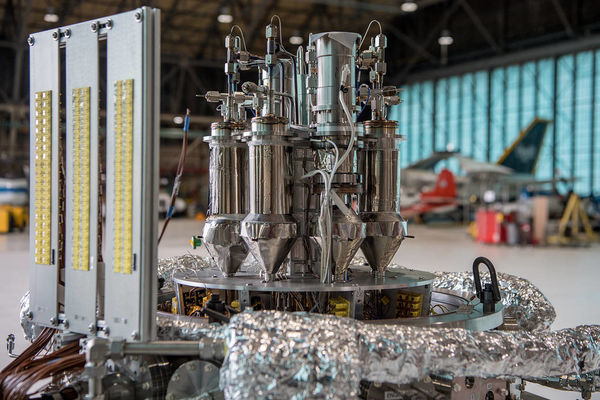
Kilopower: What's Next?
"When astronauts someday venture to the Moon, Mars and other destinations, one of the first and most important resources they will need is power. A reliable and efficient power system will be essential for day-to-day necessities, such as lighting, water and oxygen, and for mission objectives, like running experiments and producing fuel for the long journey home. That’s why NASA is conducting experiments on Kilopower, a new power source that could provide safe, efficient and plentiful energy for future robotic and human space exploration missions. This pioneering space fission power system could provide up to 10 kilowatts of electrical power -- enough to run two average households -- continuously for at least ten years. Four Kilopower units would provide enough power to establish an outpost. About the Experiment The prototype power system was designed and developed by NASA’s Glenn Research Center in collaboration with NASA’s Marshall Space Flight Center and the Los Alamos National Laboratory, while the reactor core was provided by the Y12 National Security Complex." [...]
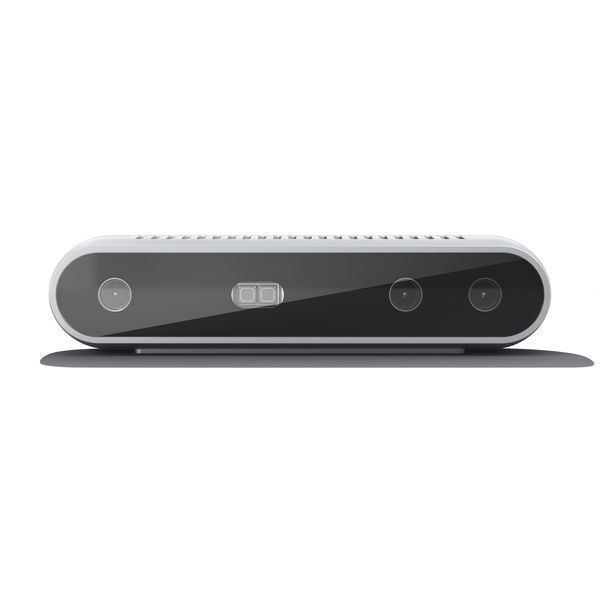
Intel Delivers Best-in-Class Depth Sensing for Makers, Educators and Developers with Intel RealSense D400 Depth Camera Series
"Today, Intel began shipping two new Intel® RealSense™ D400 Depth Cameras from the next-generation Intel RealSense D400 product family: the D415 and D435, adding 3D capabilities to any prototype development or end user-ready device or machine. Ideal for makers and educators as well as hardware prototyping and software development, the new depth cameras come in a ready-to-use, USB-powered form factor that pair with a D400 depth module, a turnkey optical depth solution, and the new Intel RealSense vision processor D4 for processing complex depth data in real time. Supported by the Intel RealSense SDK 2.0 – available for the first time as a cross-platform, open source SDK – the cameras can also be used both indoors and outdoors and in any lighting environment. More on RealSense: Intel® RealSense™ D400 Depth Camera Series (Fact Sheet) | Intel® RealSense™ D400 Depth Cameras (Product Page) | Perceive the World in 3D (Intel.com) “Many of today’s machines and devices use 2D image recognition-based computer vision, but with Intel RealSense’s best-in-class depth technology, we are redefining future technologies to ‘see’ like a human, so devices and machines can truly enrich people’s lives,” said Sagi Ben Moshe, vice president and general manager of the RealSense Group at Intel. “With its compact, ready-to-use form, the Intel RealSense D400 Depth Camera series not only makes it easy for developers to build 3D depth sensing into any design, but they are also ready to be embedded into high-volume products.” As applications for a range of computer vision uses advance across VR/AR, robotics, drones and more, adding new levels of depth for real-time feedback will make devices significantly more intelligent and enable new experiences. With the Intel RealSense Software Developer Kit that features the Intel RealSense viewer, developers, OEMs/ODMs and system integrators are unlocking new depth data with access to the depth camera to tackle everything from viewing the depth stream, visualizing 3D point clouds recording and playing back streams to quickly configuring multiple cameras together and calibrating cameras." [...]

About Microsoft MakeCode
"Microsoft MakeCode brings computer science to life for all students with fun projects, immediate results, and both block and text editors for learners at different levels. Microsoft MakeCode is a framework for creating special-purpose programming experiences for beginners, especially focused on computer science education. Microsoft MakeCode is based on the open source project Microsoft Programming Experience Toolkit (PXT). Microsoft MakeCode is the name in the user-facing editors, PXT is used in all the GitHub sources. MakeCode’s underlying programming language is a subset of TypeScript, omitting JavaScript dynamic features. The main features of MakeCode are: - a Google Blockly-based code editor along with converter to JavaScript - a Monaco-based text editor with enhanced, robust auto-completion and auto-correction powered by TypeScript." [...]
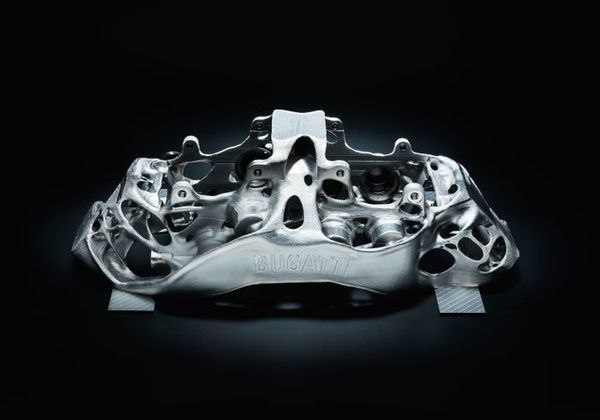
World premiere: brake caliper from 3-D printer - Bugatti develops world’s largest titanium functional component produced by additive manufacturing
"With its Veyron and Chiron super sports cars, Bugatti has established a position as a pioneer for new technical developments and innovations in the extreme performance sector of the automotive industry over the past few decades and has set breathtaking performance data and records. Now the Development Department of the French luxury brand has achieved a new coup. For the first time, the Bugatti developers have succeeded in designing a brake caliper that can be produced by 3-D printing. But that is by no means all. While the main material used for the additive production of vehicle components to date has been aluminium, the new brake caliper is made from titanium. This is therefore the world’s largest functional component produced from titanium using 3-D printing processes." [...]
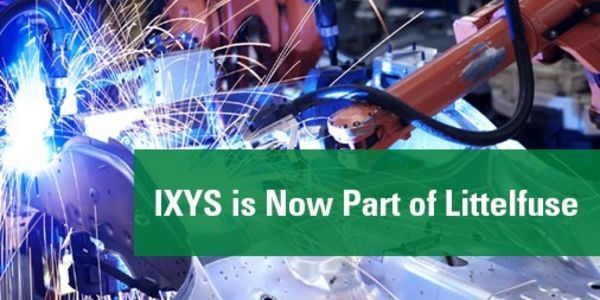
Littelfuse Completes Acquisition of IXYS Corporation
" Littelfuse, Inc. (NASDAQ:LFUS) today announced the completion of its acquisition of IXYS Corporation (NASDAQ:IXYS). IXYS is a global pioneer in the power semiconductor market with a focus on medium- to high-voltage power semiconductors across the industrial, communications, consumer and medical device markets. “Today marks a significant step forward in our company strategy to accelerate growth within the power control and industrial OEM markets,” said Dave Heinzmann, President and Chief Executive Officer of Littelfuse. “The combination of our companies brings together a broad power semiconductor portfolio, complementary technology expertise and a strong talent pool.” The transaction is expected to be immediately accretive to adjusted EPS. Littelfuse expects to achieve more than $30 million of annualized cost savings within the first two years after closing. The combination is also expected to create significant revenue synergy opportunities longer term, given the companies’ complementary offerings and combined customer base." [...]
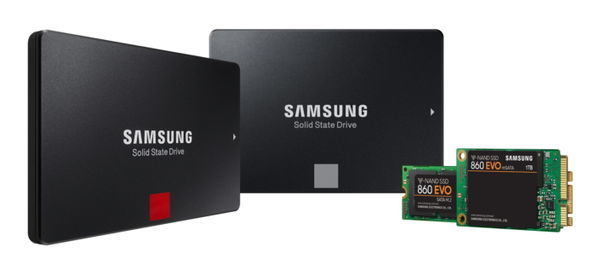
Samsung Electronics Advances SATA Lineup with 860 PRO and 860 EVO Solid State Drives Powered by V-NAND
"Samsung Electronics today introduced the 860 PRO and 860 EVO solid state drives (SSDs), the most up-to-date additions to the company’s SATA interface lineup. The products are aimed at consumers who require fast, reliable performance across various applications, from everyday computing to heavy workloads and graphic-intensive operations. Building on the successful launch of the 850 PRO and 850 EVO – the industry’s first consumer SSDs with V-NAND technology – the 860 PRO and 860 EVO achieve industry-leading performance for SATA SSDs, offering enhancements in speed, reliability, compatibility and capacity. “The new 860 PRO and 860 EVO SSDs combine the latest 512Gb and 256Gb 64-layer V-NAND, up to 4GB LPDDR4 mobile DRAM and a new MJX controller to elevate the user experience for both consumers and businesses,” said Un-Soo Kim, senior vice president of Brand Product Marketing, Memory Business at Samsung Electronics. “Samsung will continue to fuel meaningful innovations in the consumer SSD space and drive growth of the overall memory industry for years to come.” As file sizes continue to increase with high-resolution photos and 4K videos, the need for faster data transfers and sustainable high performance over a longer period of time has become paramount for users. To address this need, Samsung’s 860 PRO and 860 EVO support up to 560 MB/s read and 530 MB/s write1 speeds and offer unmatched reliability with an upgraded five-year limited warranty2, or up to 4,800 terabytes written (TBW)3 for the 860 PRO and up to 2,400 TBW4 for the 860 EVO." [...]

Successful first test for the Ariane 6 vulcain engine
"The Vulcain® 2.1 engine, developed by ArianeGroup to power the main stage of the Ariane 6 launcher, for which the maiden flight is scheduled for 2020, has just been successfully tested by the DLR (German Aerospace Center) on the P5 test facility at its site in Lampoldshausen, Germany on behalf of ArianeGroup. This is a version of the Ariane 5 Vulcain® 2 engine especially adapted for the Ariane 6 main stage, to simplify production and to lower costs. To reach these objectives the engine integrates technologies such as a gas generator built using 3D printing, a simplified divergent nozzle, and an oxygen heater for tank pressurization. These adaptations contribute to achieving the cost targets set for the Ariane 6 launcher, while retaining the efficiency and reliability demonstrated on Ariane 5. The tests carried out at Lampoldshausen will allow the new engine to be tested throughout its flight envelope (thrust, mixing ratio, propellant supply conditions). In parallel, the Ariane 6 upper stage Vinci® engine qualification program is continuing on schedule, with more than 130 test firings performed on the two test beds in France and Germany (the P4.1 at the DLR’s Lampoldshausen site and the PF52 at the ArianeGroup test site in Vernon, France), including several demonstrations of the multiple ignition capability required by Ariane customers for their missions on Ariane 6." [...]
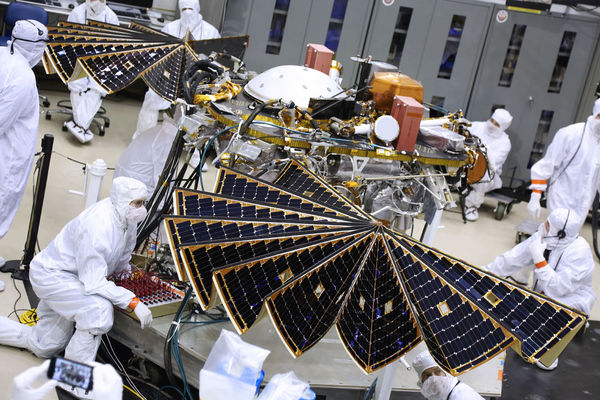
InSight Lander Solar Array Test
"The solar arrays on NASA's InSight Mars lander were deployed as part of testing conducted Jan. 23, 2018, at Lockheed Martin Space in Littleton, Colorado. Engineers and technicians evaluated the solar arrays and performed an illumination test to confirm that the solar cells were collecting power. The launch window for InSight opens May 5, 2018. The InSight Project is managed by JPL, a division of the California Institute of Technology in Pasadena, for the NASA Science Mission Directorate, Washington. InSight is part of NASA's Discovery Program, which is managed by NASA's Marshall Space Flight Center in Huntsville, Alabama. " [...]
Ciência e Tecnologia
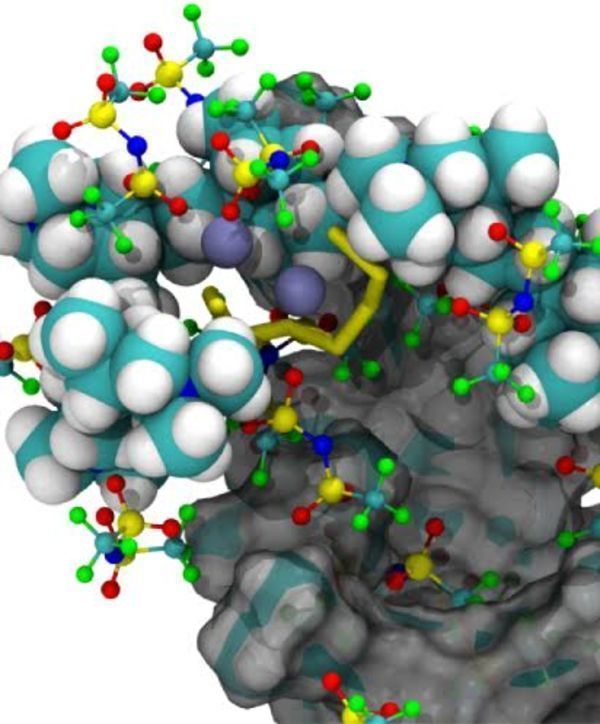
Coupling Experiments to Theory to Build a Better Battery
"A new polymer raises the bar for lithium-sulfur batteries Lithium-sulfur batteries are promising candidates for replacing common lithium-ion batteries in electric vehicles since they are cheaper, weigh less, and can store nearly double the energy for the same mass. However, lithium-sulfur batteries become unstable over time, and their electrodes deteriorate, limiting widespread adoption. Now, a team of researchers led by scientists at the U.S. Department of Energy’s Lawrence Berkeley National Laboratory (Berkeley Lab) have reported that a new lithium-sulfur battery component allows a doubling in capacity compared to a conventional lithium-sulfur battery, even after more than 100 charge cycles at high current densities, which are key performance metrics for their adoption in electric vehicles (EVs) and in aviation. They did it by designing a new polymer binder that actively regulates key ion transport processes within a lithium-sulfur battery, and have also shown how it functions on a molecular level. The work was recently reported in Nature Communications. “The new polymer acts as a wall,” said Brett Helms, a staff scientist at Berkeley Lab’s Molecular Foundry and corresponding author of the study." [...]
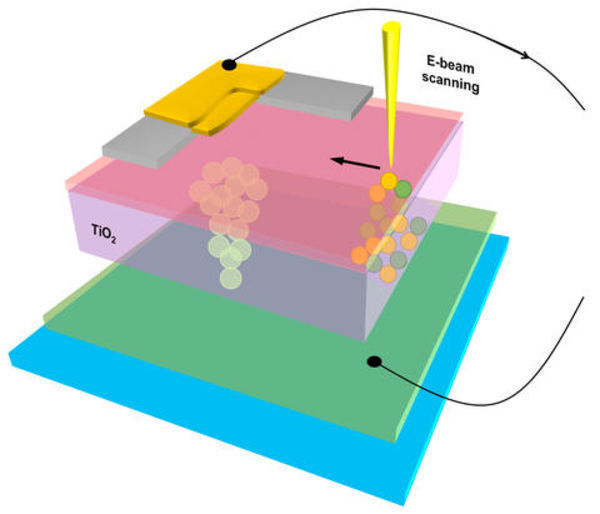
Thanks for the Memory: NIST Takes a Deep Look at Memristors
"In the race to build a computer that mimics the massive computational power of the human brain, researchers are increasingly turning to memristors, which can vary their electrical resistance based on the memory of past activity. Scientists at the National Institute of Standards and Technology (NIST) have now unveiled the long-mysterious inner workings of these semiconductor elements, which can act like the short-term memory of nerve cells. Just as the ability of one nerve cell to signal another depends on how often the cells have communicated in the recent past, the resistance of a memristor depends on the amount of current that recently flowed through it. Moreover, a memristor retains that memory even when electrical power is switched off. But despite the keen interest in memristors, scientists have lacked a detailed understanding of how these devices work and have yet to develop a standard toolset to study them. Now, NIST scientists have identified such a toolset and used it to more deeply probe how memristors operate." [...]
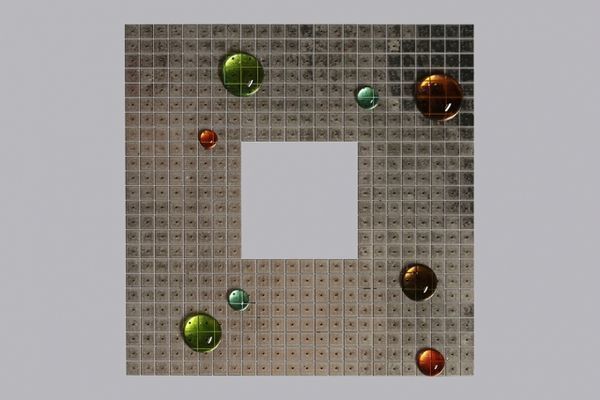
Programmable droplets
"Using electric fields to manipulate droplets on a surface could enable high-volume, low-cost biology experiments. MIT researchers have developed hardware that uses electric fields to move droplets of chemical or biological solutions around a surface, mixing them in ways that could be used to test thousands of reactions in parallel. The researchers view their system as an alternative to the microfluidic devices now commonly used in biological research, in which biological solutions are pumped through microscopic channels connected by mechanical valves. The new approach, which moves solutions around in computationally prescribed patterns, could enable experiments to be conducted more efficiently, cost-effectively, and at larger scales. “Traditional microfluidic systems use tubes, valves, and pumps,” says Udayan Umapathi, a researcher at the MIT Media Lab, who led the development of the new system. “What this means is that they are mechanical, and they break down all the time." [...]
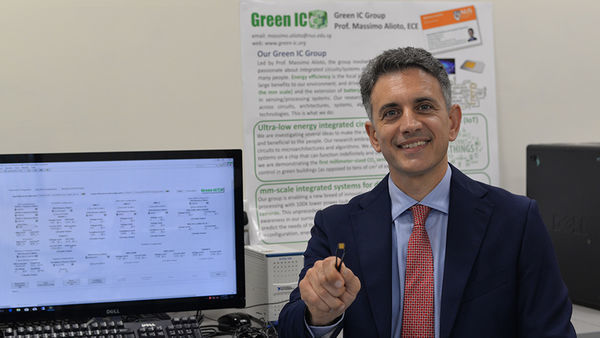
NUS engineers invent tiny vision processing chip for ultra-small smart vision systems and IoT applications
"Novel video feature extractor uses 20 times less power than existing chips and could reduce the size of untethered vision systems down to the millimetre range A team of researchers from the National University of Singapore (NUS) has developed a novel microchip, named EQSCALE, which can capture visual details from video frames at extremely low power consumption. The video feature extractor uses 20 times less power than existing best-in-class chips, and hence requires 20 times smaller battery, and could reduce the size of smart vision systems down to the millimetre range. For example, it can be powered continuously by a millimetre-sized solar cell without the need for battery replacement. Led by Associate Professor Massimo Alioto from the Department of Electrical and Computer Engineering at the NUS Faculty of Engineering, the team’s discovery is a major step forward in developing millimetre-sized smart cameras with near-perpetual lifespan. It will also pave the way for cost-effective Internet of Things (IoT) applications, such as ubiquitous safety surveillance in airports and key infrastructure, building energy management, workplace safety, and elderly care. “IoT is a fast-growing technology wave that uses massively distributed sensors to make our environment smarter and human-centric." [...]
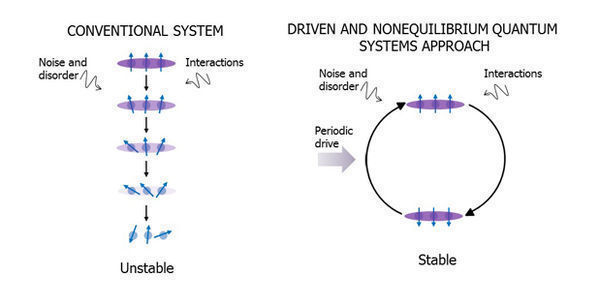
DARPA Program Aims to Extend Lifetime of Quantum Systems
"Whether it is excited electrons emitting photons in a lightbulb or the vibrational frequency of atoms in an atomic clock, quantum phenomena are simultaneously fundamental aspects of nature and the basis of current state-of-the-art and future technologies. This is particularly the case as sensor and device performance continue to improve and approach their fundamental limits. It is not lost on DARPA that controlling quantum phenomena is an increasingly important challenge in the realm of national defense. High-precision atomic clocks can enable timekeeping for navigation and communications with GPS-like performance even in GPS-denied environments. And computing based on quantum bits, or qubits, which can represent a one, a zero, or a coherent linear combination of one and zero, could open routes to new kinds of computation. But there’s a hitch." [...]
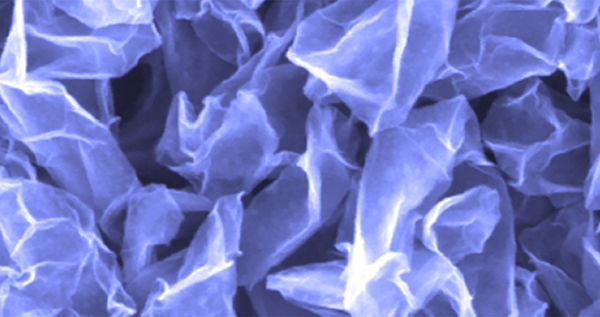
Using Crumpled Graphene Balls to Make Better Batteries
"Lithium metal-based batteries have the potential to turn the battery industry upside down. With the theoretically ultra-high capacity of lithium metal used by itself, this new type of battery could power everything from personal devices to cars. “In current batteries, lithium is usually atomically distributed in another material such as graphite or silicon in the anode,” explains Northwestern Engineering’s Jiaxing Huang. “But using an additional material ‘dilutes’ the battery’s performance. Lithium is already a metal, so why not use lithium by itself?” The answer is a research challenge scientists have spent years trying to overcome. As lithium gets charged and discharged in a battery, it starts to grow dendrites and filaments, “which causes a number of problems,” Huang said." [...]

Easier Way to Produce High Performing, Flexible Micro-Supercapacitor
"Professor Minyang Yang from the Department of Mechanical Engineering and his team developed a high-energy, flexible micro-supercapacitor in a simple and cost-effective way. Compared to conventional micro-batteries, such as lithium-ion batteries, these new batteries, also called supercapacitors, are significantly faster to charge and semi-permanent. Thin, flexible micro-supercapacitors can be a power source directly attached to wearable and flexible electronics. However, fabrication of these micro-supercapacitors requires a complex patterning process, such as lithography techniques and vacuum evaporation. Hence, the process requires expensive instruments and toxic chemicals. To simplify the fabrication of micro-supercapacitors in an eco-friendly manner, the team developed laser growth sintering technology." [...]
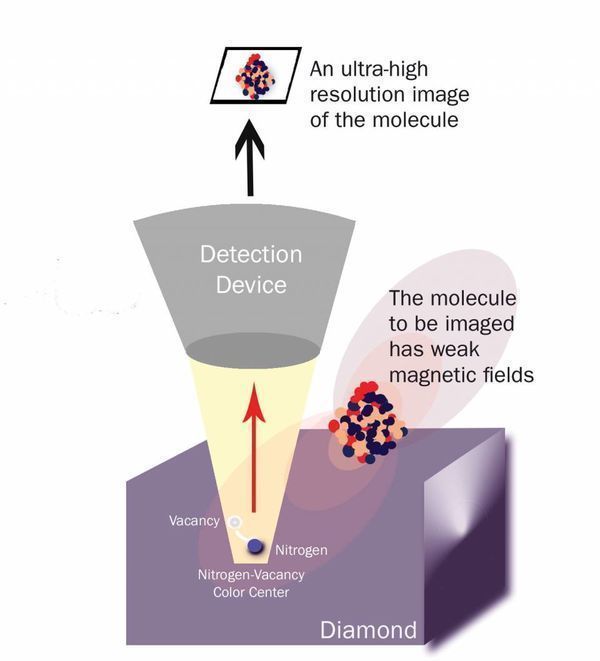
Diamonds flaws hold promise for new technologies
"Despite their charm and allure, diamonds are rarely perfect. They have tiny defects that, to assistant professor Nathalie de Leon, make them ever so appealing. These atom-sized mistakes have enormous potential in technologies for high-resolution imaging and secure communication lines. “Historically, people called these defects ‘color centers’ because when you shine light on a diamond you see a bunch of pretty colors come back,” said de Leon, who is appointed in the Department of Electrical Engineering. She wants to harness the properties of these defects to image molecules and proteins. A diamond is a tightly knit lattice of carbon atoms." [...]
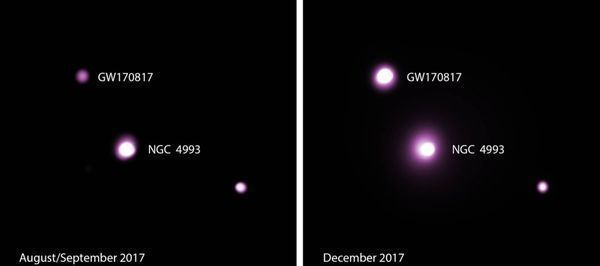
Neutron-star merger yields new puzzle for astrophysicists
"The afterglow from the distant neutron-star merger detected last August has continued to brighten – much to the surprise of astrophysicists studying the aftermath of the massive collision that took place about 138 million light years away and sent gravitational waves rippling through the universe. New observations from NASA’s orbiting Chandra X-ray Observatory, reported in Astrophysical Journal Letters, indicate that the gamma ray burst unleashed by the collision is more complex than scientists initially imagined. “Usually when we see a short gamma-ray burst, the jet emission generated gets bright for a short time as it smashes into the surrounding medium – then fades as the system stops injecting energy into the outflow,” says McGill University astrophysicist Daryl Haggard, whose research group led the new study. “This one is different; it’s definitely not a simple, plain-Jane narrow jet.” Cocoon theory The new data could be explained using more complicated models for the remnants of the neutron star merger. One possibility: the merger launched a jet that shock-heated the surrounding gaseous debris, creating a hot ‘cocoon’ around the jet that has glowed in X-rays and radio light for many months. The X-ray observations jibe with radio-wave data reported last month by another team of scientists, which found that those emissions from the collision also continued to brighten over time." [...]

Caltech and Disney Engineers Collaborate on Robotics
"Caltech and Disney Research have entered into a joint research agreement to pioneer robotic control systems and further explore artificial intelligence technologies. The agreement creates a framework that will allow researchers and engineers at Caltech and Disney Research to easily collaborate on projects of mutual interest. The three-year agreement officially began in August 2017 with projects focused on developing robots with new autonomous movement capabilities and improving machine learning for robots on the move. The goal is to help smooth future human-machine interactions. Caltech's Pietro Perona will work with Disney roboticist Martin Buehler to create navigation and perception software that could allow robotic characters to safely move through dense crowds and interact with people. The goal is to design these robots to perceive and understand their surroundings, distinguishing objects from people." [...]
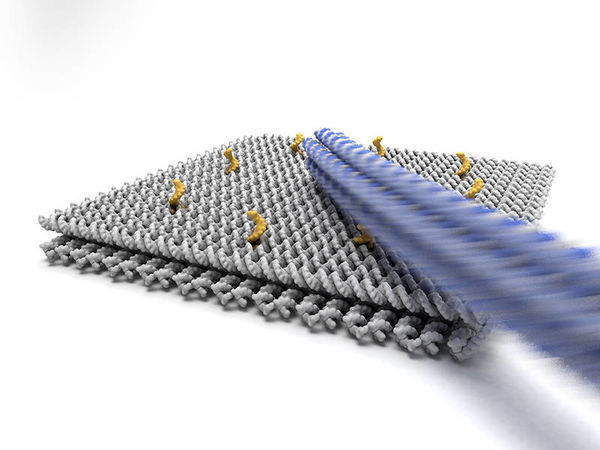
Piecework at the nano assembly line
"Scientists at the Technical University of Munich (TUM) have developed a novel electric propulsion technology for nanorobots. It allows molecular machines to move a hundred thousand times faster than with the biochemical processes used to date. This makes nanobots fast enough to do assembly line work in molecular factories. The new research results will appear as the cover story on 19th January in the renowned scientific journal Science. Up and down, up and down. The points of light alternate back and forth in lockstep." [...]

Groundbreaking experiment will test the limits of quantum theory
"Scientists from three UK universities are to test one of the fundamental laws of physics as part of a major Europe-wide project awarded more than £3m in funding. Experts from the University of Southampton, Queen’s University Belfast and UCL have formed a consortium with European universities and British photonics technology company M Squared to test the limits of one of the core principles of quantum mechanics – the mind-boggling physical laws that allow microscopic particles such as atoms and electrons to be in two places at once. Established at the beginning of the 20th century, quantum theory is a mathematical framework that provides, to date, the most accurate understanding of the results of experiments conducted on physical systems as small as single atoms, very small molecules and very faint light. The consortium has devised an ambitious experiment to test the so-called quantum superposition principle (QSP) – the law that allows microscopic systems to appear in two different, perfectly distinguishable, configurations at the same time. The validity of QSP at the microscopic level is accepted by scientists, and confirmed by an enormous amount of data. But what prevents it from applying to the ‘large-scale’ world around us?" [...]
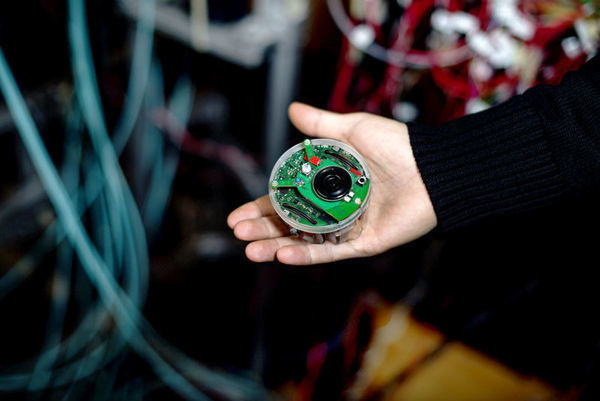
Professor designs algorithms to make robots better collaborators
"Fully autonomous robots, such as drones and self-driving cars, are no longer a thing of the future. But hurdles remain before they completely integrate into our daily lives, delivering packages to our doorsteps, helping first responders, and assisting the elderly. The potential of a group of autonomous agents to perform complex tasks in a well-coordinated manner distinguishes the research of Rifat Sipahi, associate professor of mechanical and industrial engineering at Northeastern. He designs algorithms that enable groups of robots to make good decisions despite inherent communication delays in information sharing. Such delays—from minutes, down to fractions of a second—can be detrimental to group behavior, especially when these robots have access to and can act only on “outdated” information. But Sipahi is working to overcome that challenge." [...]
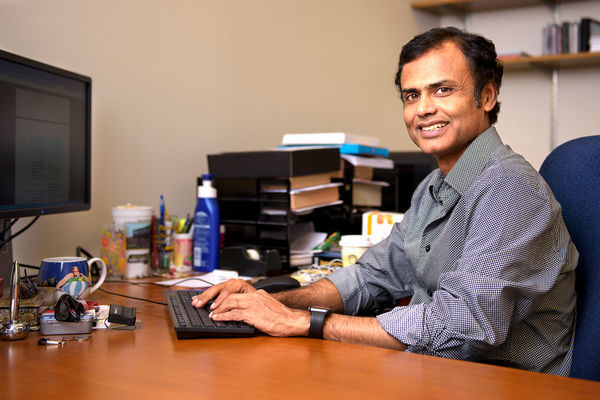
New C-BRIC center will tackle brain-inspired computing
"Purdue University will lead a new national center to develop brain-inspired computing for intelligent autonomous systems such as drones and personal robots capable of operating without human intervention. The Center for Brain-inspired Computing Enabling Autonomous Intelligence, or C-BRIC, is a five-year project supported by $27 million in funding from the Semiconductor Research Corp. (SRC) via its Joint University Microelectronics Program, which provides funding from a consortium of industrial sponsors as well as from the Defense Advanced Research Projects Agency. The SRC operates research programs in the United States and globally that connect industry to university researchers, deliver early results to enable technological advances, and prepare a highly-trained workforce for the semiconductor industry. Additional funds include $3.96 million from Purdue and support from participating universities, pending final contracts, which include: Arizona State University, Georgia Institute of Technology, Pennsylvania State University, Portland State University, Princeton University, University of Pennsylvania, and the University of Southern California At the state level, Purdue's Discovery Park worked with the Indiana Economic Development Corporation to secure funding to establish an intelligent autonomous systems laboratory at Purdue, pending IEDC board approval. C-BRIC, which begins operating in January 2018, will be led by Kaushik Roy, Purdue’s Edward G. Tiedemann Jr. Distinguished Professor of Electrical and Computer Engineering (ECE), with Anand Raghunathan, Purdue professor of ECE, as associate director." [...]

Researchers use sound waves to advance optical communication
"Illinois researchers have demonstrated that sound waves can be used to produce ultraminiature optical diodes that are tiny enough to fit onto a computer chip. These devices, called optical isolators, may help solve major data capacity and system size challenges for photonic integrated circuits, the light-based equivalent of electronic circuits, which are used for computing and communications. Isolators are nonreciprocal or “one-way” devices similar to electronic diodes. They protect laser sources from back reflections and are necessary for routing light signals around optical networks. Today, the dominant technology for producing such nonreciprocal devices requires materials that change their optical properties in response to magnetic fields, the researchers said. “There are several problems with using magnetically responsive materials to achieve the one-way flow of light in a photonic chip,” said mechanical science and engineering professor and co-author of the study Gaurav Bahl." [...]
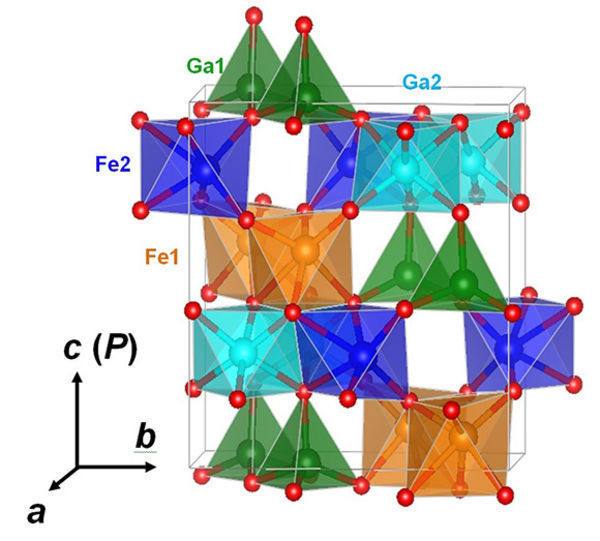
Room-Temperature Multiferroic Thin Films and Their Properties
"Scientists at Tokyo Tech and Tohoku University have developed high-quality GFO epitaxial films and systematically investigated their ferroelectric and ferromagnetic properties. They also demonstrated the room-temperature magnetocapacitance effects of these GFO thin films. Multiferroic materials show magnetically driven ferroelectricity. They are attracting increasing attention because of their fascinating properties such as magnetic (electric) field-controlled ferroelectric (ferromagnetic) properties and because they can be used in novel technological applications such as fast-writing, power-saving, and nondestructive data storage. However, because multiferroicity is typically observed at low temperatures, it is highly desirable to develop multiferroic materials that can be observed at room temperature. GaxFe2-xO3, or GFO for short, is a promising room-temperature multiferroic material because of its large magnetization." [...]
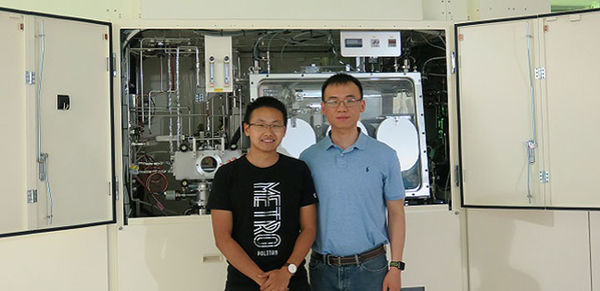
Taking control at the junction
"Fine tuning the composition of nitride alloys can further the development of optical and electronic interface devices. Controlling the electronic properties at the interface between materials could help in the quest for improvements in computer memory. KAUST researchers show that varying the atomic composition of boron-nitride-based alloys enables tuning of an important electronic property known as polarization. When an electric field is applied to a single atom, it shifts the center of mass of the cloud of negatively charged electrons away from the positively charged nucleus it surrounds. In a crystalline solid, these so-called electric dipoles of all atoms combine to create electric polarization. Some materials exhibit a spontaneous polarization, even without an external electric field." [...]

New measurements show spin transistor is within reach
"University of Groningen physicists Siddhartha Omar and professor Bart van der Wees have shown that it is possible to influence the lifetime of spin in graphene. They used tungsten disulfide to induce spin orbit coupling in graphene and were able to tune the effect with an electric field. This confirms that it is possible to make a graphene-based spin transistor, which is a vital component in spin-based electronics or spintronics. The results were published on 16 January in Physical Reviews B. Spintronics could form a low-power alternative to electronic devices. It is based not on a charge current but on a current of electron spins. Bart van Wees, professor of Physics of Nanodevices at the University of Groningen: “The spin is a quantum mechanical property of electrons, which can best be imagined as small spheres spinning around their own axis, causing them to behave like small compass needles." [...]

The algorithms of our future thinking machines
"Behind every self-driving car, self-learning robot and smart building hides a variety of advanced algorithms that control learning and decision making. Some of the mathematical models that make up the backbone of automated systems are currently under construction by researchers from Uppsala University and KTH. It has been almost a year since IT researchers at Uppsala University and KTH received 24 million kronor from the Swedish Research Council for the formation of the research environment "NewLEADS". However, preparations for the project "New approaches for model-based learning of dynamical systems" were initiated already in January 2016. Collaboration between the research groups goes even further back, says Thomas Schön, Professor of Automatic Control at Uppsala University. "We know each other well from before and have co-written research papers." [...]
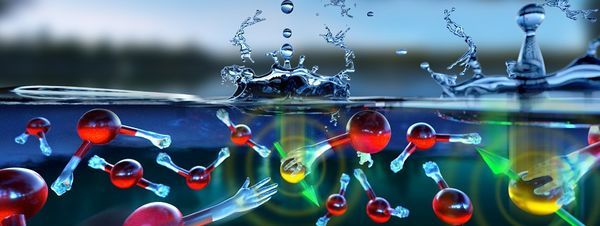
Electrons in the water
"It's a popular tradition to throw coins into fountains in the hopes of having wishes granted. But what would happen if you could “throw” electrons into the water instead? That is, what happens shortly after an electron is injected into water? This decades-old question now has an answer, thanks to an article published in Nature Communications on January 16. The study is the result of collaboration among researchers at the University of Chicago, the U.S. Department of Energy’s (DOE) Argonne and Lawrence Livermore National Laboratories, and the University of California — San Diego. “Knowing the electron affinity of liquid water is crucial to understanding and modeling processes involving electron transfer between solids and the liquid, ... ” — Alex Gaiduk, postdoctoral fellow at the University of Chicago." [...]
Adding graphene girders to silicon electrodes could double the life of lithium batteries
"New research led by WMG, at the University of Warwick has found an effective approach to replacing graphite in the anodes of lithium-ion batteries using silicon, by reinforcing the anode’s structure with graphene girders. This could more than double the life of rechargeable lithium-ion based batteries by greatly extending the operating lifetime of the electrode, and also increase the capacity delivered by those batteries. Graphite has been the default choice of active material for anodes in lithium—ion batteries since their original launch by Sony but researchers and manufacturers have long sought a way to replace graphite with silicon, as it is an abundantly available element with ten times the gravimetric energy density of graphite. Unfortunately, silicon has several other performance issues that continue to limit its commercial exploitation. Due to its volume expansion upon lithiation silicon particles can electrochemically agglomerate in ways that impede further charge-discharge efficiency over time. Silicon is also not intrinsically elastic enough to cope with the strain of lithiation when it is repeatedly charged, leading to cracking, pulverisation and rapid physical degradation of the anode’s composite microstructure." [...]
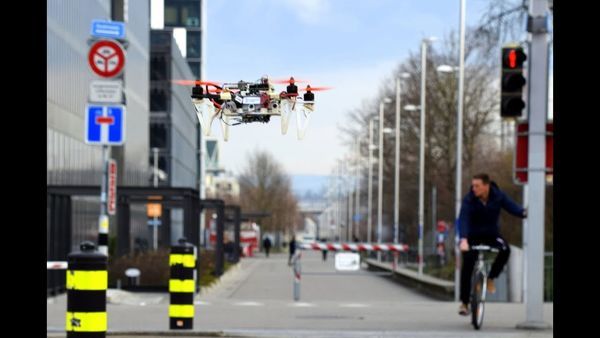
Drones learn to navigate autonomously by imitating cars and bicycles
"Developed by UZH researchers, the algorithm DroNet allows drones to fly completely by themselves through the streets of a city and in indoor environments. Therefore, the algorithm had to learn traffic rules and adapt training examples from cyclists and car drivers. All today’s commercial drones use GPS, which works fine above building roofs and in high altitudes. But what, when the drones have to navigate autonomously at low altitude among tall buildings or in the dense, unstructured city streets with cars, cyclists or pedestrians suddenly crossing their way? Until now, commercial drones are not able to quickly react to such unforeseen events. Integrate autonomously navigating drones Researchers of the University of Zurich and the National Centre of Competence in Research NCCR Robotics developed DroNet, an algorithm that can safely drive a drone through the streets of a city." [...]

Engineers design artificial synapse for "brain-on-a-chip" hardware
"Design is major stepping stone toward portable artificial-intelligence devices. When it comes to processing power, the human brain just can’t be beat. Packed within the squishy, football-sized organ are somewhere around 100 billion neurons. At any given moment, a single neuron can relay instructions to thousands of other neurons via synapses — the spaces between neurons, across which neurotransmitters are exchanged. There are more than 100 trillion synapses that mediate neuron signaling in the brain, strengthening some connections while pruning others, in a process that enables the brain to recognize patterns, remember facts, and carry out other learning tasks, at lightning speeds. Researchers in the emerging field of “neuromorphic computing” have attempted to design computer chips that work like the human brain." [...]
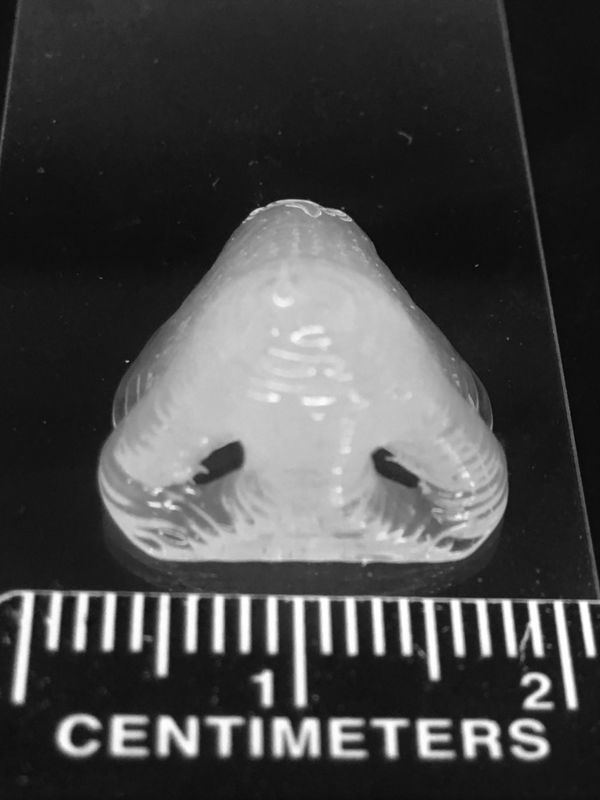
3-D printing improves cell adhesion and strength of PDMS polymer
"Combining two different polymer forms can switch manufacturing of silicone parts from molding, casting and spin coating of simple forms to 3-D printing of complex geometries with better mechanical characteristics and better biological adhesion, according to a team of Penn State researchers. "So far, PDMS (polydimethylsiloxane, or silicone) has limitations in formability and manufacturing of devices," said Ibrahim T. Ozbolat, Hartz Family Associate Professor of Engineering Science and Mechanics and bioengineering. "Most research is done using casting or micro molding, but this fabrication yields materials with weak mechanical properties and also weak cell adhesion. Researchers often use extracellular proteins like fibronectin to make cells adhere." PDMS is used to make lab-on-a-chip devices, organ-on-a-chip devices, two- and three-dimensional cell culture platforms, and biological machines. The material is more commonly seen as heat-resistant silicone spatulas and flexible baking pans, but these are geometrically simple and can easily be molded." [...]

Physicists create Star Wars-style 3D projections - just don't call them holograms
"Laser and particle system produces three-dimensional moving images that appear to float in thin air. Daniel Smalley has long dreamed of building the kind of 3D holograms that pepper science-fiction films. But watching inventor Tony Stark thrust his hands through ghostly 3D body armour in the 2008 film Iron Man, Smalley realized that he could never achieve that using holography, the current standard for high-tech 3D display, because Stark’s hand would block the hologram’s light source. “That irritated me,” says Smalley, a physicist at Brigham Young University in Provo, Utah. He immediately tried to work out how to get around that. Smalley's team has taken a different approach — using a technique known as volumetric display — to create moving 3D images that viewers can see from any angle." [...]

Virtual reality goes magnetic
"The recent success of Pokémon GO made many people very familiar with the concept of “augmented reality”: computer-generated perception blends into the real and virtual worlds. So far, these apps have largely used optical methods for motion detection. Physicists at the German Helmholtz-Zentrum Dresden-Rossendorf (HZDR) working together with colleagues at the Leibniz Institute for Solid State and Materials Research (IFW) and the Johannes Kepler University Linz (JKU) (Austria) have now developed an ultrathin electronic magnetic sensor that can be worn on skin. Just by interacting with magnetic fields, the device enables a touchless manipulation of virtual and physical objects. The results are published in the journal “Science Advances” (DOI: 10.1126/sciadv.aao2623). At first glance, the shiny little gold elements look like a modern tattoo." [...]
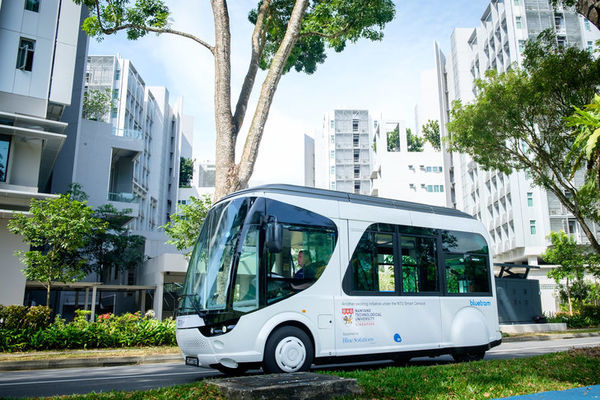
NTU and BlueSG launch ultra-fast charging electric shuttle
"Developed by the Blue Solutions, Bolloré Group, the shuttle undergoes quick charging at charging stations while passengers board or alight Nanyang Technological University, Singapore (NTU Singapore) and BlueSG Pte Ltd, a subsidiary of Blue Solutions owned by the Bolloré Group, have launched Singapore’s first flash-charging electric shuttle. Named the NTU-Blue Solutions Flash Shuttle, the fully electric vehicle only requires 20 seconds to recharge at stations which are fitted for its quick charging while passengers board and alight. It uses Bolloré’s Bluetram vehicle, which aims to be as efficient as tram systems, but comes with fast-charging and emission-free continuous operation. The road trials planned for the 22-seater shuttle will be between NTU’s Halls of Residence at North Hill and JTC’s CleanTech One, which is part of the Jurong Innovation District where special charging stations have been built. The shuttle was launched today by NTU’s Vice President (Research) Professor Lam Khin Yong and BlueSG’s Managing Director Mr Franck Vitté and witnessed by the French Minister of Higher Education, Research and Innovation, Ms. Frédérique Vidal. NTU President Professor Subra Suresh, said: “The move to introduce electromobility and cutting-edge transportation technologies is part of our vision to transform NTU into a Smart Campus." [...]
TU Wien develops new semiconductor processing technology
"Extremely fine porous structures with tiny holes – resembling a kind of sponge at nano level – can be generated in semiconductors. This opens up new possibilities for the realization of tiny sensors or unusual optical and electronic components. There have already been experiments in this area with porous structures made from silicon. Now, researchers at TU Wien have succeeded in developing a method for the controlled manufacture of porous silicon carbide. Silicon carbide has significant advantages over silicon; it has greater chemical resistance and can therefore be used for biological applications, for example, without any additional coating required. To demonstrate the potential of this new technology, a special mirror that selectively reflects different colours of light has been integrated into a SiC wafer by creating thin layers with a thickness of approximately 70 nm each and with different degrees of porosity." [...]

A new approach to rechargeable batteries
"New metal-mesh membrane could solve longstanding problems and lead to inexpensive power storage. A type of battery first invented nearly five decades ago could catapult to the forefront of energy storage technologies, thanks to a new finding by researchers at MIT. The battery, based on electrodes made of sodium and nickel chloride and using a new type of metal mesh membrane, could be used for grid-scale installations to make intermittent power sources such as wind and solar capable of delivering reliable baseload electricity. The findings are being reported today in the journal Nature Energy, by a team led by MIT professor Donald Sadoway, postdocs Huayi Yin and Brice Chung, and four others. Although the basic battery chemistry the team used, based on a liquid sodium electrode material, was first described in 1968, the concept never caught on as a practical approach because of one significant drawback: It required the use of a thin membrane to separate its molten components, and the only known material with the needed properties for that membrane was a brittle and fragile ceramic. These paper-thin membranes made the batteries too easily damaged in real-world operating conditions, so apart from a few specialized industrial applications, the system has never been widely implemented." [...]
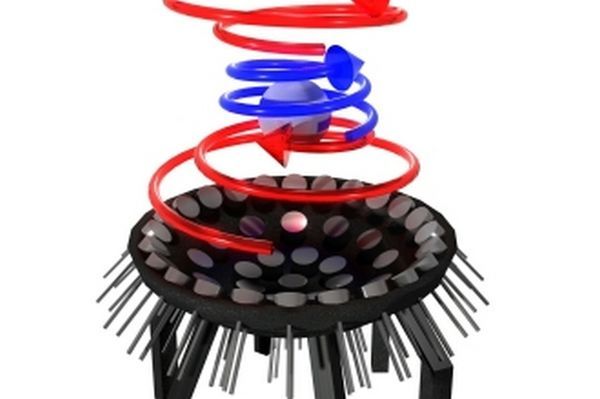
The world's most powerful acoustic tractor beam could pave the way for levitating humans
"Acoustic tractor beams use the power of sound to hold particles in mid-air, and unlike magnetic levitation, they can grab most solids, liquids or even small insects and food. For the first time University of Bristol engineers have shown that it is possible to stably trap objects larger than the wavelength of sound in an acoustic tractor beam. This discovery opens the door to the manipulation of drug capsules or micro-surgical implements within the human body. Container-less transportation of delicate larger samples is now also a possibility and who knows, this could be a step towards levitating humans. Researchers previously thought that acoustic tractor beams were fundamentally limited to levitating small objects as all the previous attempts to trap particles larger than the wavelength had been unstable, with objects spinning uncontrollably. This is because rotating sound field transfers some of its spinning motion to the objects causing them to orbit faster and faster until they are ejected." [...]
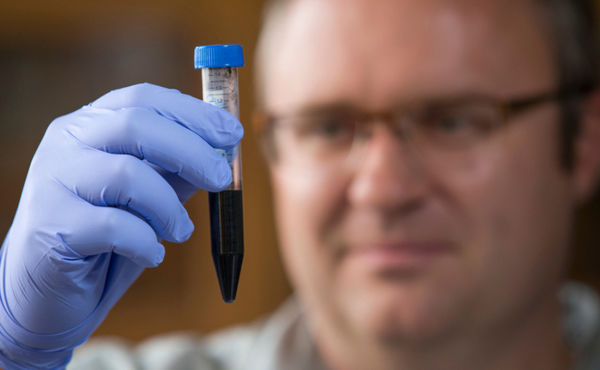
Engineers develop flexible, water-repellent graphene circuits for washable electronics
"New graphene printing technology can produce electronic circuits that are low-cost, flexible, highly conductive and water repellent. The nanotechnology “would lend enormous value to self-cleaning wearable/washable electronics that are resistant to stains, or ice and biofilm formation,” according to a recent paper describing the discovery. “We’re taking low-cost, inkjet-printed graphene and tuning it with a laser to make functional materials,” said Jonathan Claussen, an Iowa State University assistant professor of mechanical engineering, an associate of the U.S. Department of Energy’s Ames Laboratory and the corresponding author of the paper recently featured on the cover of the journal Nanoscale. The paper describes how Claussen and the nanoengineers in his research group use inkjet printing technology to create electric circuits on flexible materials. In this case, the ink is flakes of graphene – the wonder material can be a great conductor of electricity and heat, plus it’s strong, stable and biocompatible. The printed flakes, however, aren’t highly conductive and have to be processed to remove non-conductive binders and weld the flakes together, boosting conductivity and making them useful for electronics or sensors." [...]

NIST Report on Blockchain Technology Aims to Go Beyond the Hype
"New publication strives to help businesses make good decisions about when and if to use blockchain Beguiling, baffling or both—that’s blockchain. Aiming to clarify the subject for the benefit of companies and other organizations, the National Institute of Standards and Technology (NIST) has released a straightforward introduction to blockchain, which underpins Bitcoin and other digital currencies. Virtual barrels of digital ink are flowing in the media nowadays about these cryptocurrencies and the underlying blockchain technology that enables them. Much of the attention stems either from the giddy heights of value attained lately by the most well-known of these currencies, Bitcoin, or from the novelty of blockchain itself, which has been described (link is external) as the most disruptive technology since the internet. Blockchain’s proponents believe it lets individuals perform transactions safely without the costs or security risks that accompany the intermediaries that are required in conventional transactions. The NIST report’s authors hope it will be useful to businesses that want to make clear-eyed decisions about whether blockchain would be an asset to their products." [...]
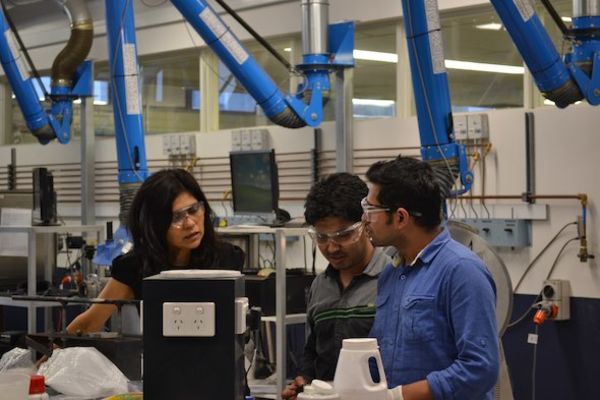
Innovation: UNSW "microfactories" transform waste into green gold
"A team of Australian researchers is developing global award-winning suite of technologies that is turning the notion of recycling on its head, potentially diverting tonnes of toxic waste from landfill, while also building a new and highly lucrative green manufacturing sector in Australia. The team, led by University of New South Wales Scientia Professor Veena Sahajwalla, has been working together for nearly two years now on developing new processes to recycle complex waste, including old printer plastic shells and wrecked cars. But rather than seeking to turn plastics into plastics, and glass into glass, Professor Sahajwalla and her team are working to develop new processes to transform this waste into something completely different: valuable commodities that can be used in industry. Based out of the $8.8 million Australian Research Council Green Manufacturing Hub at UNSW, the team – in collaboration with the University of Wollongong, the University of Sydney, Victoria’s Monash University and a number of industry partners – has been developing technologies that can convert automotive waste into metal alloys, integrate agricultural waste into ferrous processing and use waste plastic to make green ceramics. They are also working to deliver cost effective solutions for recycling e-waste, which – not surprisingly – has become the world’s fastest growing rubbish stream. “It’s challenging the entire notion of what traditional recycling means,” Sahajwalla – who is the Director of the Centre for Sustainable Materials Research and Technology in Australia – told RenewEconomy in an interview last week." [...]
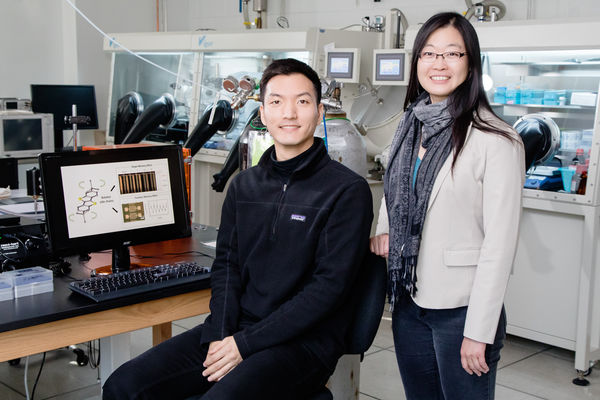
Shape-shifting organic crystals use memory to improve plastic electronics
"Researchers have identified a mechanism that triggers shape-memory phenomena in organic crystals used in plastic electronics. Shape-shifting structural materials are made with metal alloys, but the new generation of economical printable plastic electronics is poised to benefit from this phenomenon, too. Shape-memory materials science and plastic electronics technology, when merged, could open the door to advancements in low-power electronics, medical electronics devices and multifunctional shape-memory materials. The findings are published in the journal Nature Communications and confirm the shape-memory phenomenon in two organic semiconductors materials. Devices like the expandable stents that open and unblock clogged human blood vessels use shape-memory technology. Heat, light and electrical signals, or mechanic forces pass information through the devices telling them to expand, contract, bend and morph back into their original form – and can do so repeatedly, like a snake constricting to swallow its dinner." [...]

Sensors and big data provide farmers with decision-making support
"Researchers in the field of e-agriculture like to repeat an anecdote according to which farmers used to tell their children they should study if they wanted to leave for the town but now tell them to study if they want to stay on the farm. Changes are under way not just in production but also in management. Big data combined with the Internet of Things makes plants and animals themselves the key decision-making support for rural producers. Precision agriculture already uses information technology to analyze climate, soil and other variables. Now, the producer’s management decisions can also be based on the signals emitted by crops and livestock. “It’s no exaggeration to say that in the next ten years, we’ll see plants and animals responding to each stimulus in the production system." [...]
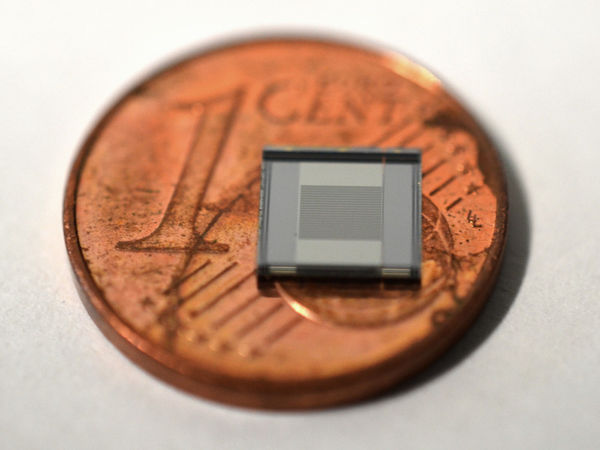
New sensor for measuring electric field strength
"Accurately measuring electric fields is important in a variety of applications, such as weather forecasting, process control on industrial machinery, or ensuring the safety of people working on high-voltage power lines. Yet from a technological perspective, this is no easy task. In a break from the design principle that has been followed by all other measuring devices to date, a research team at TU Wien has now developed a silicon-based sensor as a microelectromechanical system (MEMS). Devised in conjunction with the Department for Integrated Sensor Systems at Danube University Krems, this sensor has the major advantage that it does not distort the very electric field it is currently measuring. An introduction to the new sensor has also been published in the electronics journal "Nature Electronics". Distorting measuring devices "The equipment currently used to measure electric field strength has some significant downsides," explains Andreas Kainz from the Institute of Sensor and Actuator Systems (Faculty of Electrical Engineering, TU Wien)." [...]

A lab for self-driving vehicles
"ETH Zurich students are learning about self-driving vehicles using a model with a fleet of mini-taxis. As part of the Duckietown course, they are working together with students in Montreal and Chicago on problems that concern developers of self-driving cars around the world. A camera, an inexpensive mini-computer, a chassis, wheels and tiny LEDs are all it takes to build a Duckiebot. This is what Andrea Censi and Jacopo Tani – lecturers on the new course for self-driving cars at ETH Zurich – call these small robot taxis. Censi and Tani are senior assistants in the research group headed by Emilio Frazzoli, professor in the Department of Mechanical and Process Engineering and an internationally renowned specialist in autonomous systems. On Tuesday, they presented their Duckietown teaching project in ETH Zurich’s main hall." [...]
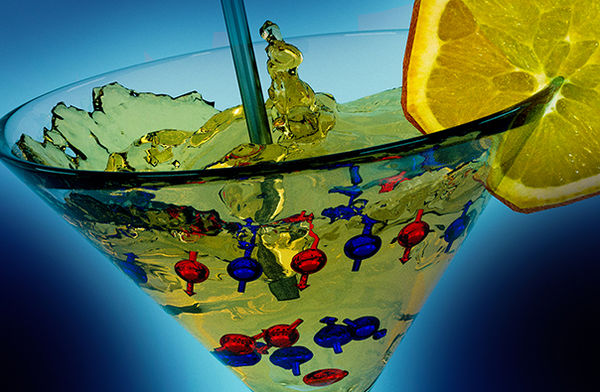
Quantum cocktail provides insights on memory control
"Experiments based on atoms in a shaken artificial crystal made of light offer novel insight into the physics of quantum many-body systems — which might help in the development of future data-storage technologies. The speed of writing and reading out magnetic information from storage devices is limited by the time that it takes to manipulate the data carrier. To speed up these processes, researchers have recently started to explore the use of ultrashort laser pulses that can switch magnetic domains in solid-state materials. This route proved to be promising, but the underlying physical mechanisms remain poorly understood. This is largely due the complexity of the magnetic materials involved, in which a large number of magnetic entities interact with one another. Such so-called quantum many-body systems are notoriously difficult to study." [...]
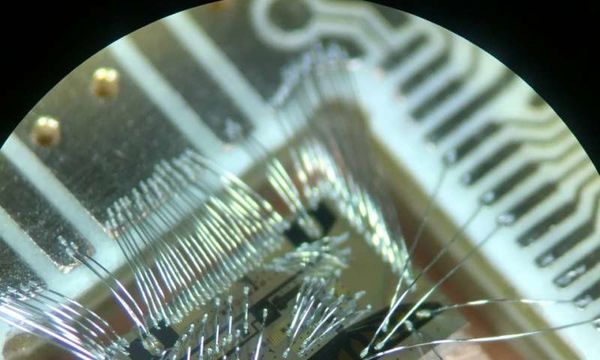
Quantum race accelerates development of silicon quantum chip
"A team of TU Delft scientists led by Professor Vandersypen seeks to create better and more reliable quantum processors. In a neck-and-neck race with competitors, they showed that quantum information of an electron spin can be transported to a photon in a silicon quantum chip. This is important in order to connect quantum bits across the chip and to scale up to large numbers of qubits. Their work was published today in Science. Quantum computers of the future will be able to carry out computations far beyond the capacity of today's computers. Quantum superpositions and entanglement of quantum bits (qubits) make it possible to perform parallel computations." [...]
Documentação
A documentação é parte essencial do processo de aprendizagem e a Internet além de artigos interessantes de explorar também tem alguma documentação em formato PDF interessante de ler. Todos os links aqui apresentados são para conteúdo disponibilizado livremente pelo editor do livro.
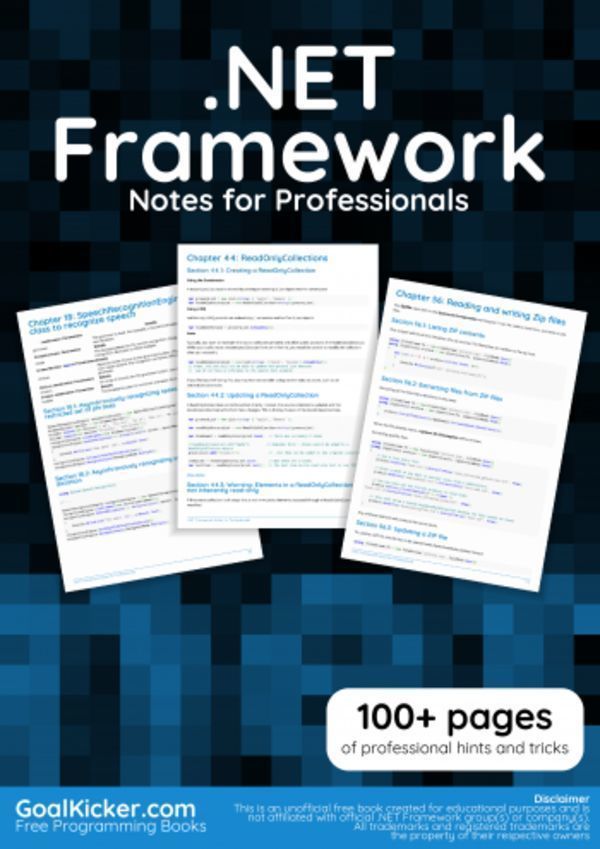
.NET Framework Notes for Professionals book
"The .NET Framework Notes for Professionals book is compiled from Stack Overflow Documentation, the content is written by the beautiful people at Stack Overflow. Text content is released under Creative Commons BY-SA. See credits at the end of this book whom contributed to the various chapters. Images may be copyright of their respective owners unless otherwise specified Book created for educational purposes and is not affiliated with .NET Framework group(s), company(s) nor Stack Overflow. All trademarks belong to their respective company owners 192 pages, published on January 2018" [...]
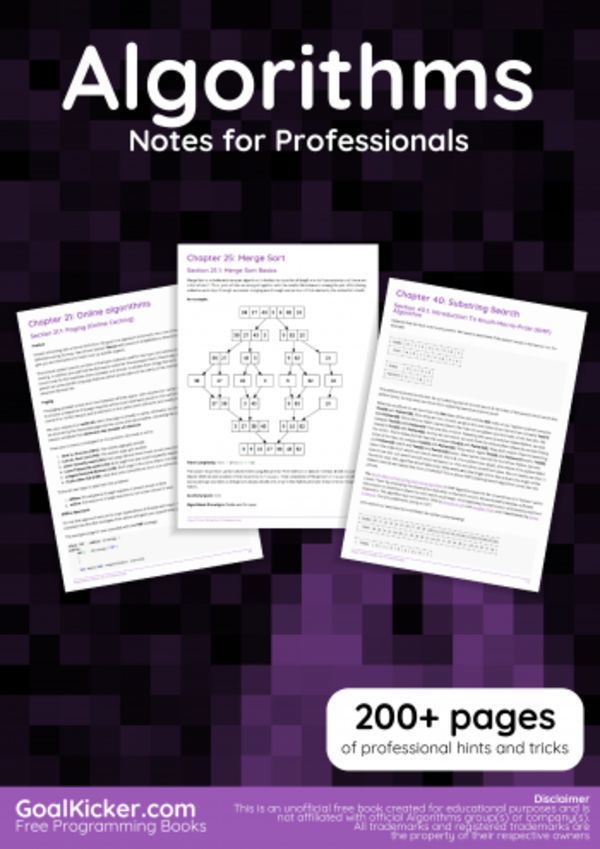
Algorithms Notes for Professionals book
"The Algorithms Notes for Professionals book is compiled from Stack Overflow Documentation, the content is written by the beautiful people at Stack Overflow. Text content is released under Creative Commons BY-SA. See credits at the end of this book whom contributed to the various chapters. Images may be copyright of their respective owners unless otherwise specified Book created for educational purposes and is not affiliated with Algorithms group(s), company(s) nor Stack Overflow. All trademarks belong to their respective company owners 252 pages, published on January 2018" [...]
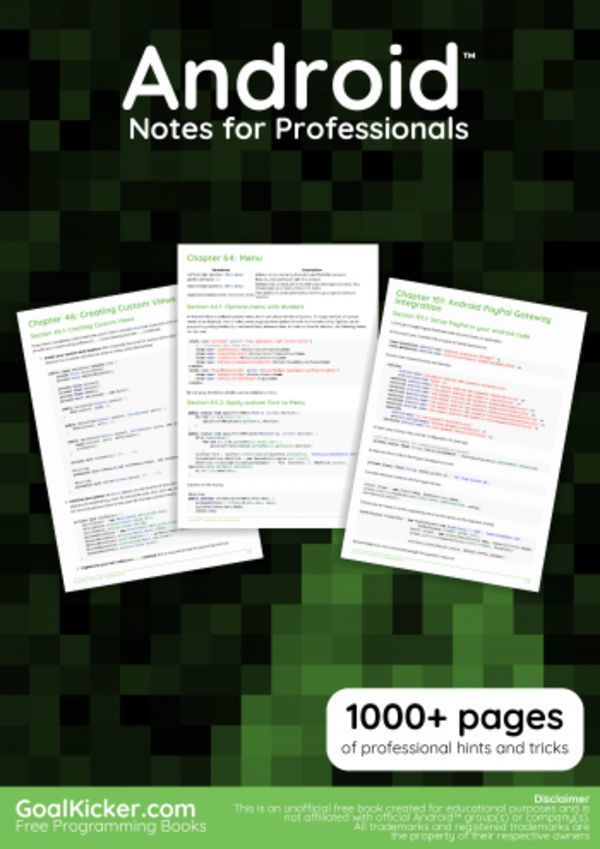
Android™ Notes for Professionals book
"The Android™ Notes for Professionals book is compiled from Stack Overflow Documentation, the content is written by the beautiful people at Stack Overflow. Text content is released under Creative Commons BY-SA. See credits at the end of this book whom contributed to the various chapters. Images may be copyright of their respective owners unless otherwise specified Book created for educational purposes and is not affiliated with Android™ group(s), company(s) nor Stack Overflow. All trademarks belong to their respective company owners 1325 pages, published on January 2018" [...]
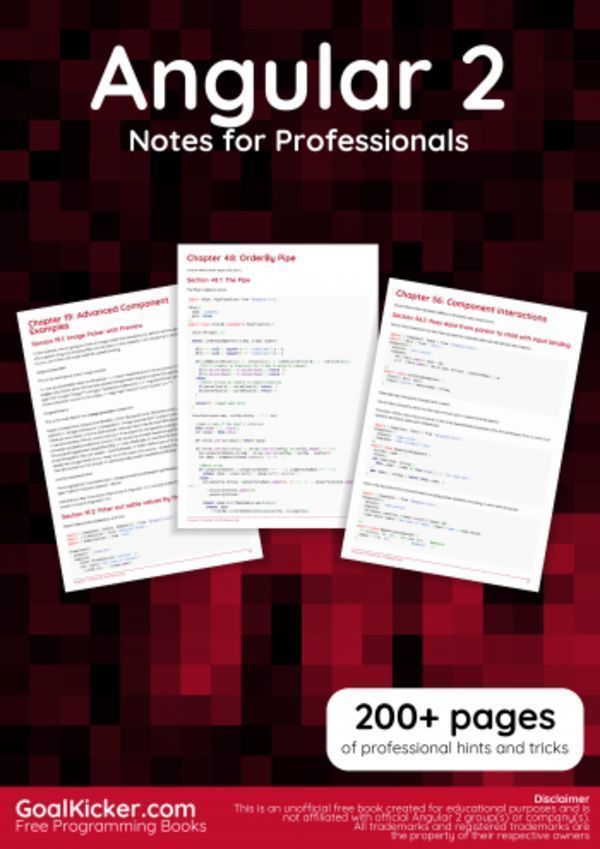
Angular 2 Notes for Professionals book
"The Angular 2 Notes for Professionals book is compiled from Stack Overflow Documentation, the content is written by the beautiful people at Stack Overflow. Text content is released under Creative Commons BY-SA. See credits at the end of this book whom contributed to the various chapters. Images may be copyright of their respective owners unless otherwise specified Book created for educational purposes and is not affiliated with Angular 2 group(s), company(s) nor Stack Overflow. All trademarks belong to their respective company owners 230 pages, published on January 2018" [...]
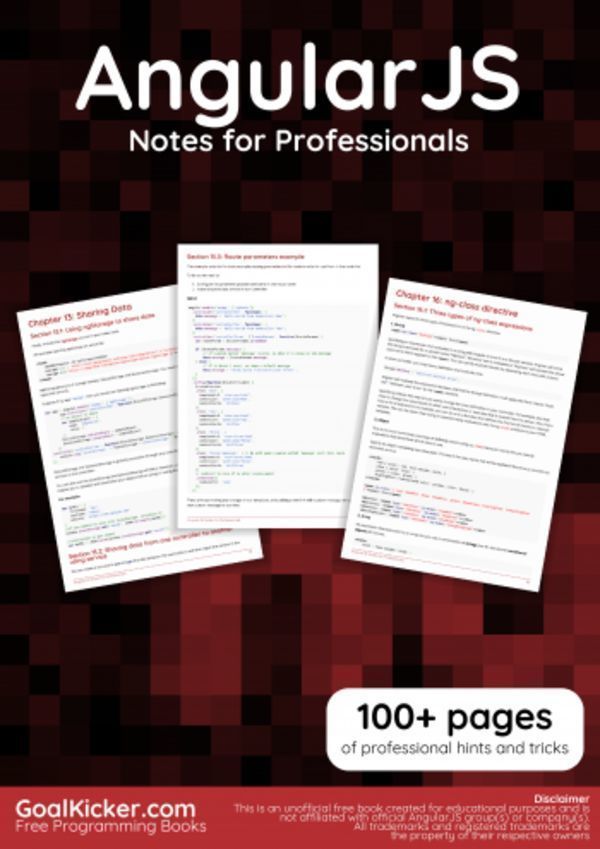
AngularJS Notes for Professionals book
"The AngularJS Notes for Professionals book is compiled from Stack Overflow Documentation, the content is written by the beautiful people at Stack Overflow. Text content is released under Creative Commons BY-SA. See credits at the end of this book whom contributed to the various chapters. Images may be copyright of their respective owners unless otherwise specified Book created for educational purposes and is not affiliated with AngularJS group(s), company(s) nor Stack Overflow. All trademarks belong to their respective company owners 200 pages, published on January 2018" [...]
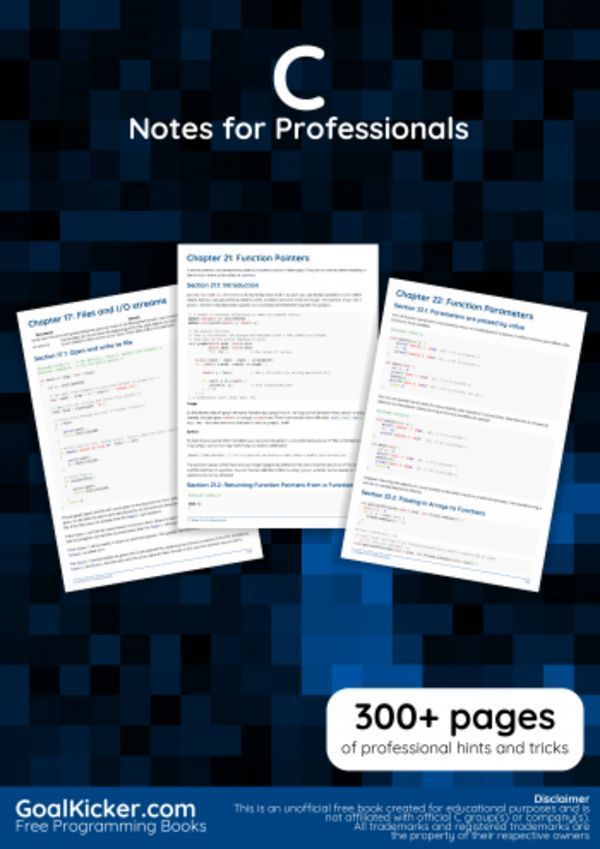
C Notes for Professionals book
"The C Notes for Professionals book is compiled from Stack Overflow Documentation, the content is written by the beautiful people at Stack Overflow. Text content is released under Creative Commons BY-SA. See credits at the end of this book whom contributed to the various chapters. Images may be copyright of their respective owners unless otherwise specified Book created for educational purposes and is not affiliated with C group(s), company(s) nor Stack Overflow. All trademarks belong to their respective company owners 340 pages, published on January 2018" [...]
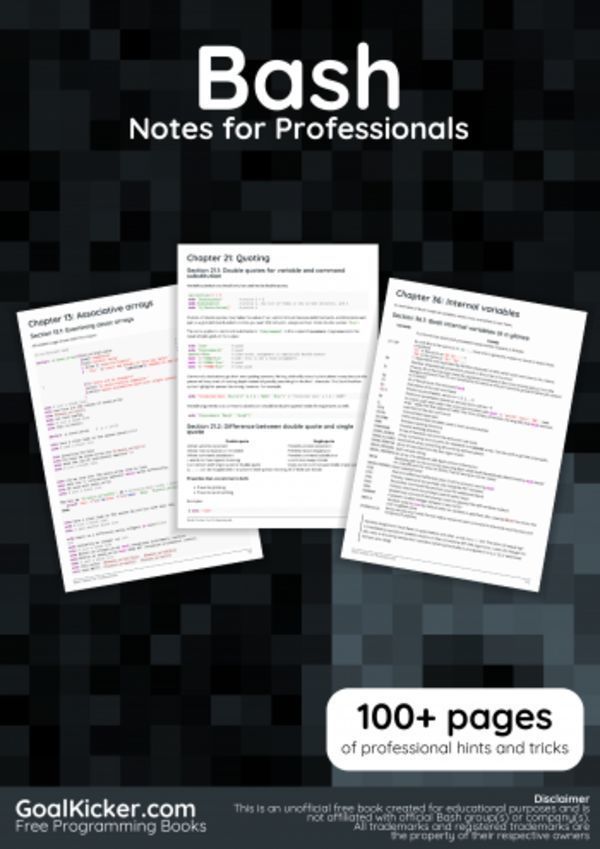
Bash Notes for Professionals book
"The Bash Notes for Professionals book is compiled from Stack Overflow Documentation, the content is written by the beautiful people at Stack Overflow. Text content is released under Creative Commons BY-SA. See credits at the end of this book whom contributed to the various chapters. Images may be copyright of their respective owners unless otherwise specified Book created for educational purposes and is not affiliated with Bash group(s), company(s) nor Stack Overflow. All trademarks belong to their respective company owners 202 pages, published on January 2018" [...]
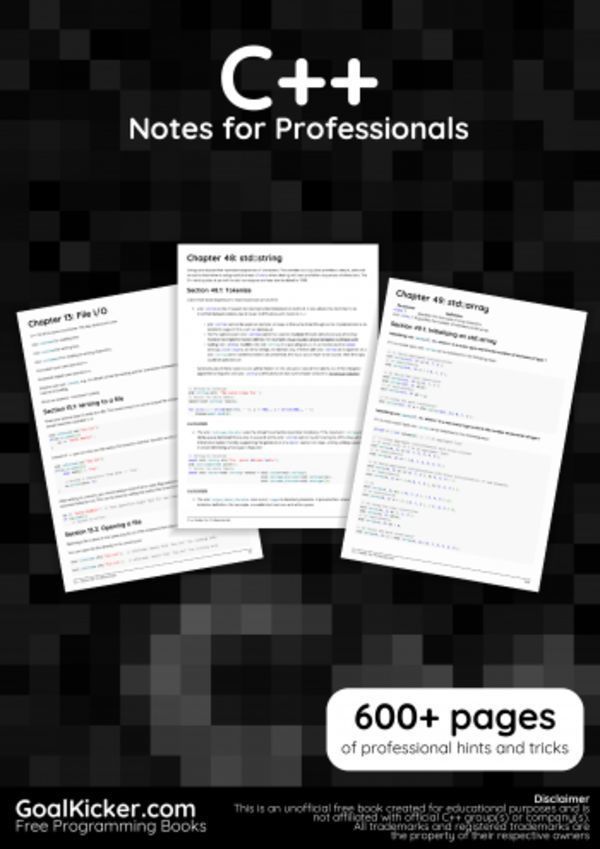
Cplusplus Notes for Professionals book
"The C++ Notes for Professionals book is compiled from Stack Overflow Documentation, the content is written by the beautiful people at Stack Overflow. Text content is released under Creative Commons BY-SA. See credits at the end of this book whom contributed to the various chapters. Images may be copyright of their respective owners unless otherwise specified Book created for educational purposes and is not affiliated with C++ group(s), company(s) nor Stack Overflow. All trademarks belong to their respective company owners 704 pages, published on January 2018" [...]

C Sharp Notes for Professionals book
"The C# Notes for Professionals book is compiled from Stack Overflow Documentation, the content is written by the beautiful people at Stack Overflow. Text content is released under Creative Commons BY-SA. See credits at the end of this book whom contributed to the various chapters. Images may be copyright of their respective owners unless otherwise specified Book created for educational purposes and is not affiliated with C# group(s), company(s) nor Stack Overflow. All trademarks belong to their respective company owners 807 pages, published on January 2018" [...]
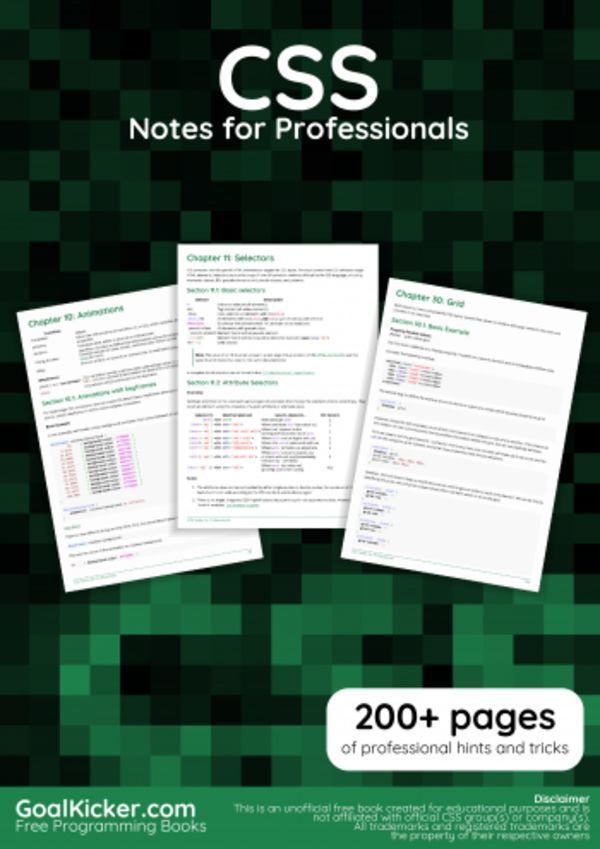
CSS Notes for Professionals book
"The CSS Notes for Professionals book is compiled from Stack Overflow Documentation, the content is written by the beautiful people at Stack Overflow. Text content is released under Creative Commons BY-SA. See credits at the end of this book whom contributed to the various chapters. Images may be copyright of their respective owners unless otherwise specified Book created for educational purposes and is not affiliated with CSS group(s), company(s) nor Stack Overflow. All trademarks belong to their respective company owners 241 pages, published on January 2018" [...]
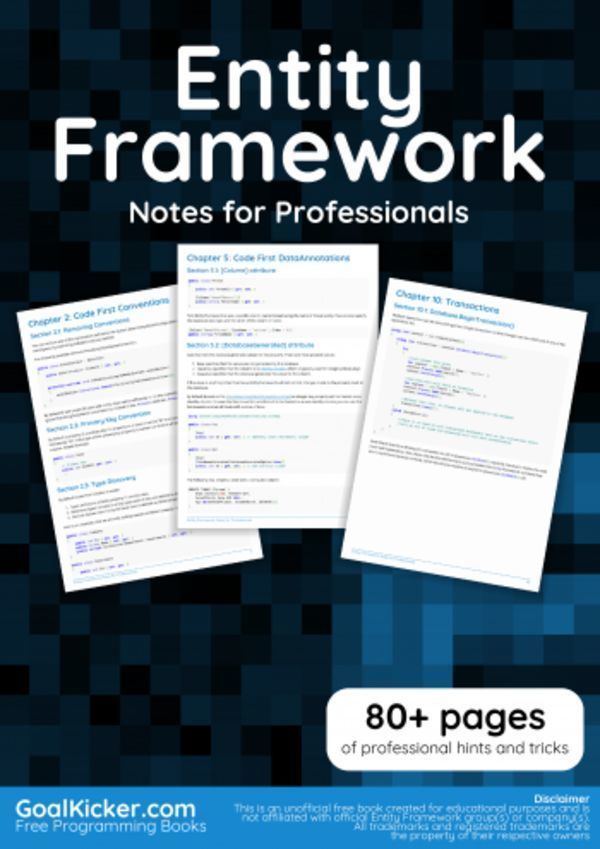
Entity Framework Notes for Professionals book
"The Entity Framework Notes for Professionals book is compiled from Stack Overflow Documentation, the content is written by the beautiful people at Stack Overflow. Text content is released under Creative Commons BY-SA. See credits at the end of this book whom contributed to the various chapters. Images may be copyright of their respective owners unless otherwise specified Book created for educational purposes and is not affiliated with Entity Framework group(s), company(s) nor Stack Overflow. All trademarks belong to their respective company owners 94 pages, published on January 2018" [...]
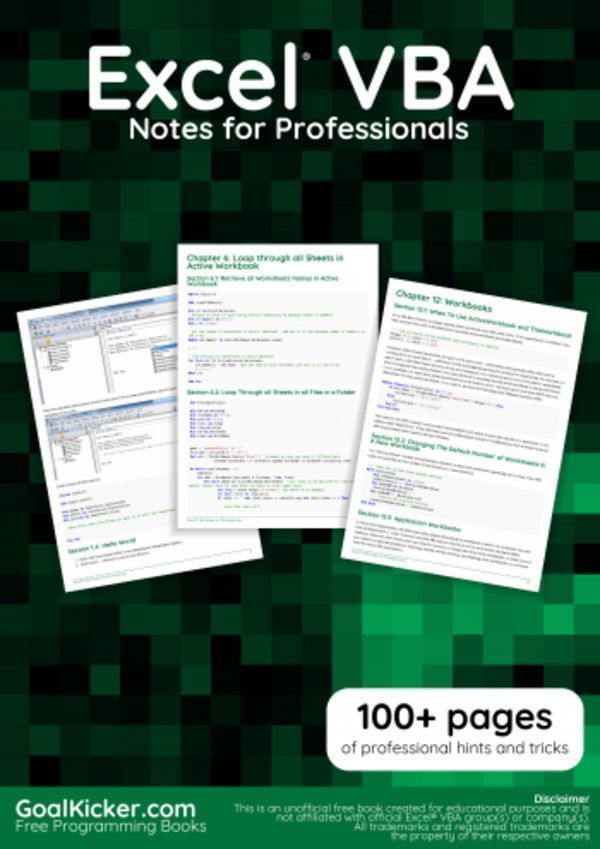
Excel VBA Notes for Professionals book
"The Excel® VBA Notes for Professionals book is compiled from Stack Overflow Documentation, the content is written by the beautiful people at Stack Overflow. Text content is released under Creative Commons BY-SA. See credits at the end of this book whom contributed to the various chapters. Images may be copyright of their respective owners unless otherwise specified Book created for educational purposes and is not affiliated with Excel® VBA group(s), company(s) nor Stack Overflow. All trademarks belong to their respective company owners 127 pages, published on January 2018" [...]
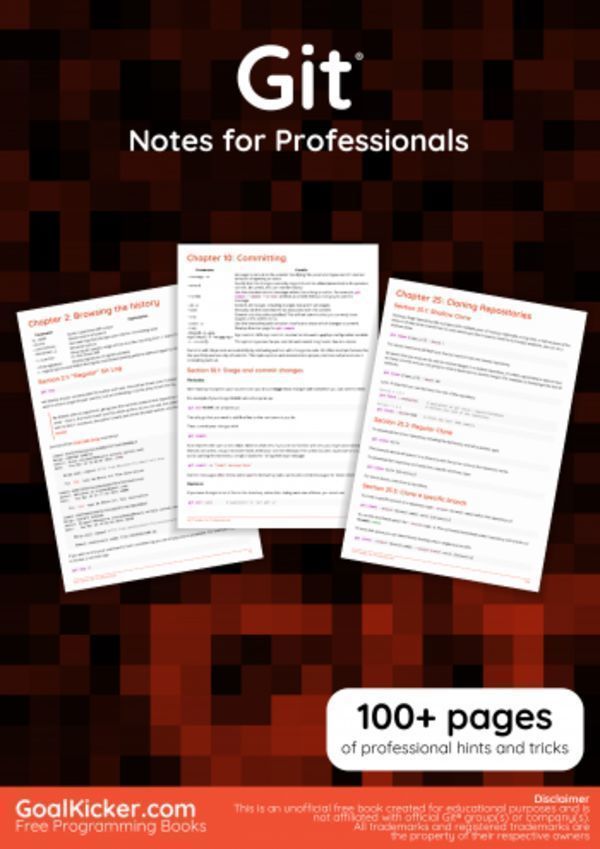
Git Notes for Professionals book
"The Git® Notes for Professionals book is compiled from Stack Overflow Documentation, the content is written by the beautiful people at Stack Overflow. Text content is released under Creative Commons BY-SA. See credits at the end of this book whom contributed to the various chapters. Images may be copyright of their respective owners unless otherwise specified Book created for educational purposes and is not affiliated with Git® group(s), company(s) nor Stack Overflow. All trademarks belong to their respective company owners 193 pages, published on January 2018" [...]

Haskell Notes for Professionals book
"The Haskell Notes for Professionals book is compiled from Stack Overflow Documentation, the content is written by the beautiful people at Stack Overflow. Text content is released under Creative Commons BY-SA. See credits at the end of this book whom contributed to the various chapters. Images may be copyright of their respective owners unless otherwise specified Book created for educational purposes and is not affiliated with Haskell group(s), company(s) nor Stack Overflow. All trademarks belong to their respective company owners 228 pages, published on January 2018" [...]
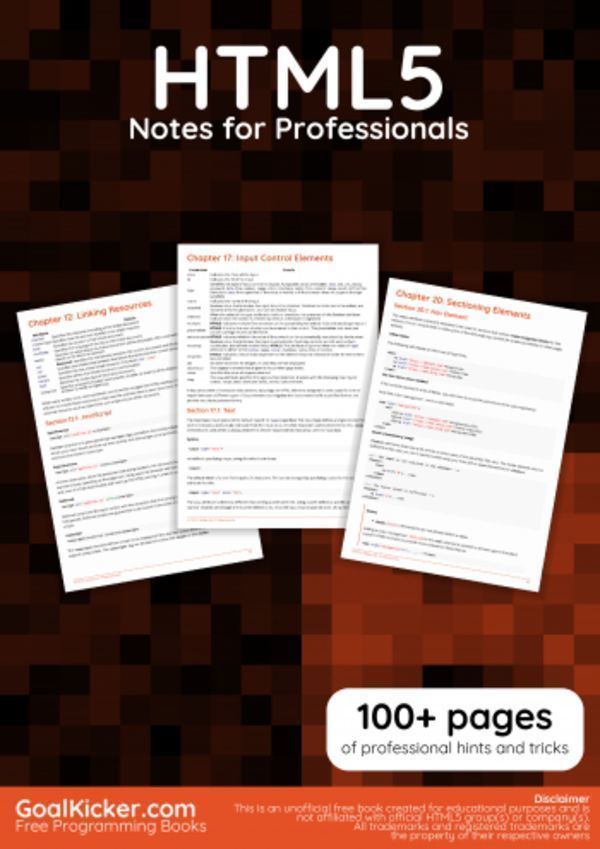
HTML5 Notes for Professionals book
"The HTML5 Notes for Professionals book is compiled from Stack Overflow Documentation, the content is written by the beautiful people at Stack Overflow. Text content is released under Creative Commons BY-SA. See credits at the end of this book whom contributed to the various chapters. Images may be copyright of their respective owners unless otherwise specified Book created for educational purposes and is not affiliated with HTML5 group(s), company(s) nor Stack Overflow. All trademarks belong to their respective company owners 125 pages, published on January 2018" [...]

HTML5 Canvas Notes for Professionals book
"The HTML5 Canvas Notes for Professionals book is compiled from Stack Overflow Documentation, the content is written by the beautiful people at Stack Overflow. Text content is released under Creative Commons BY-SA. See credits at the end of this book whom contributed to the various chapters. Images may be copyright of their respective owners unless otherwise specified Book created for educational purposes and is not affiliated with HTML5 Canvas group(s), company(s) nor Stack Overflow. All trademarks belong to their respective company owners 180 pages, published on January 2018" [...]
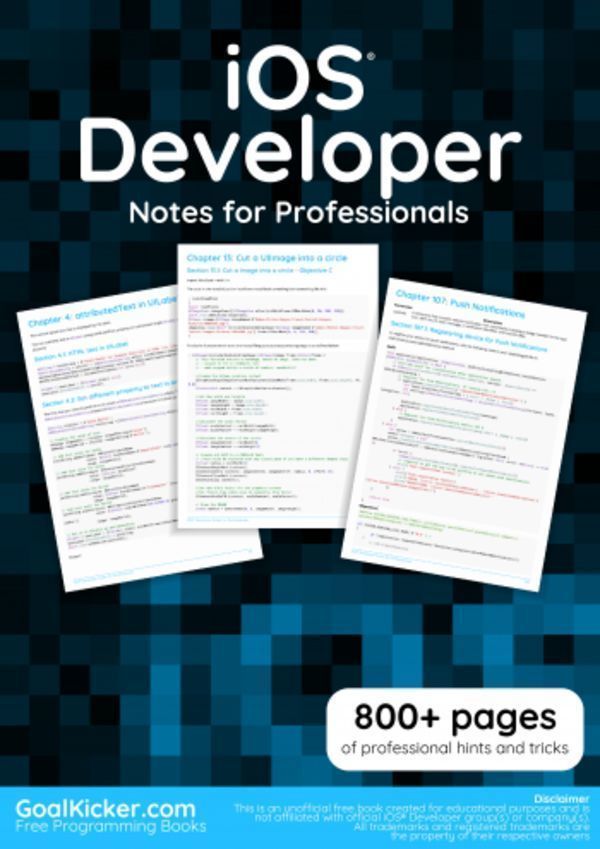
iOS Developer Notes for Professionals book
"The iOS® Developer Notes for Professionals book is compiled from Stack Overflow Documentation, the content is written by the beautiful people at Stack Overflow. Text content is released under Creative Commons BY-SA. See credits at the end of this book whom contributed to the various chapters. Images may be copyright of their respective owners unless otherwise specified Book created for educational purposes and is not affiliated with iOS® Developer group(s), company(s) nor Stack Overflow. All trademarks belong to their respective company owners 886 pages, published on January 2018" [...]
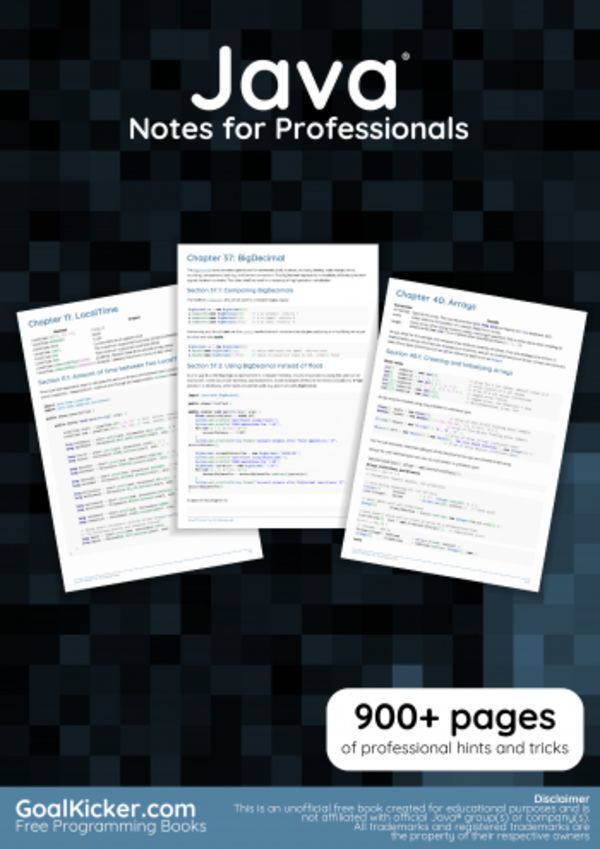
Java Notes for Professionals book
"The Java® Notes for Professionals book is compiled from Stack Overflow Documentation, the content is written by the beautiful people at Stack Overflow. Text content is released under Creative Commons BY-SA. See credits at the end of this book whom contributed to the various chapters. Images may be copyright of their respective owners unless otherwise specified Book created for educational purposes and is not affiliated with Java® group(s), company(s) nor Stack Overflow. All trademarks belong to their respective company owners 976 pages, published on January 2018" [...]
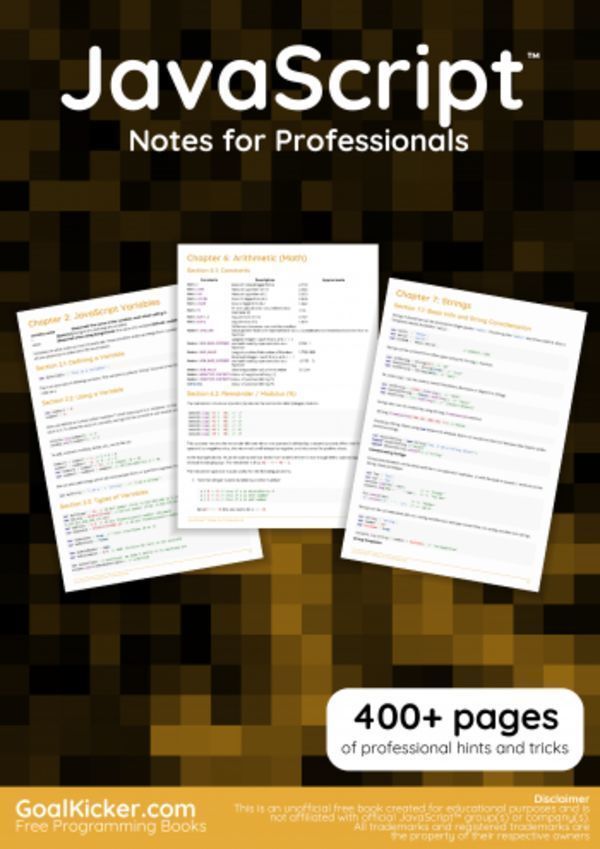
JavaScript Notes for Professionals book
"The JavaScript™ Notes for Professionals book is compiled from Stack Overflow Documentation, the content is written by the beautiful people at Stack Overflow. Text content is released under Creative Commons BY-SA. See credits at the end of this book whom contributed to the various chapters. Images may be copyright of their respective owners unless otherwise specified Book created for educational purposes and is not affiliated with JavaScript™ group(s), company(s) nor Stack Overflow. All trademarks belong to their respective company owners 480 pages, published on January 2018" [...]
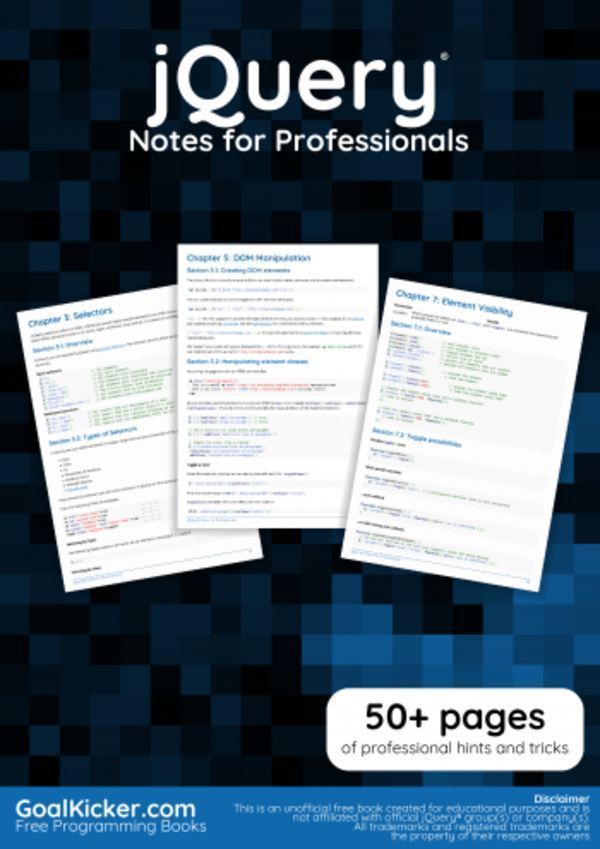
jQuery Notes for Professionals book
"The jQuery® Notes for Professionals book is compiled from Stack Overflow Documentation, the content is written by the beautiful people at Stack Overflow. Text content is released under Creative Commons BY-SA. See credits at the end of this book whom contributed to the various chapters. Images may be copyright of their respective owners unless otherwise specified Book created for educational purposes and is not affiliated with jQuery® group(s), company(s) nor Stack Overflow. All trademarks belong to their respective company owners 66 pages, published on January 2018" [...]
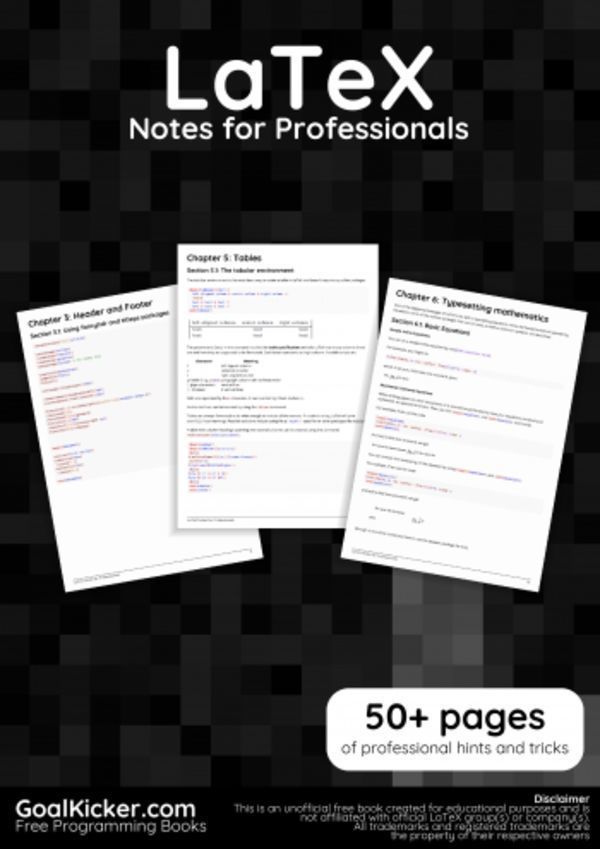
LaTeX Notes for Professionals book
"The LaTeX Notes for Professionals book is compiled from Stack Overflow Documentation, the content is written by the beautiful people at Stack Overflow. Text content is released under Creative Commons BY-SA. See credits at the end of this book whom contributed to the various chapters. Images may be copyright of their respective owners unless otherwise specified Book created for educational purposes and is not affiliated with LaTeX group(s), company(s) nor Stack Overflow. All trademarks belong to their respective company owners 60 pages, published on January 2018" [...]
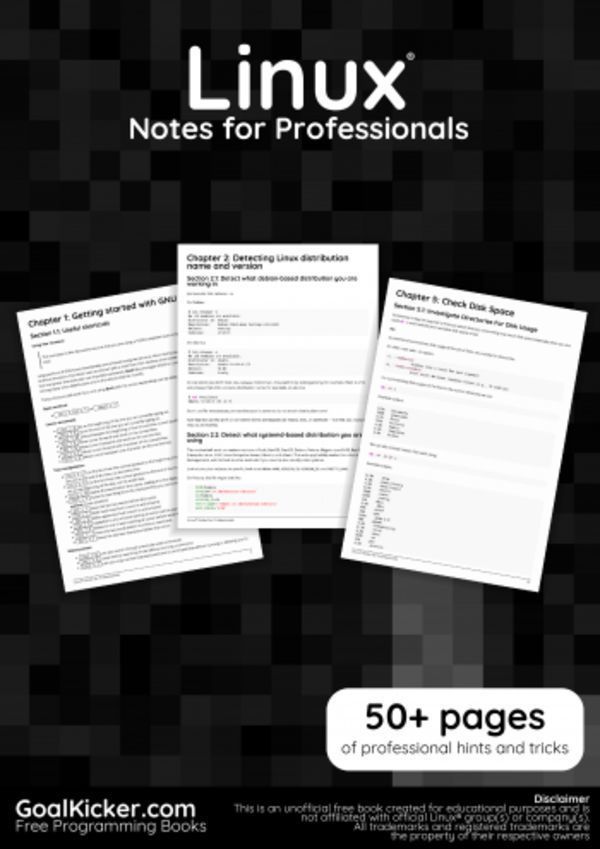
Linux Notes for Professionals book
"The Linux® Notes for Professionals book is compiled from Stack Overflow Documentation, the content is written by the beautiful people at Stack Overflow. Text content is released under Creative Commons BY-SA. See credits at the end of this book whom contributed to the various chapters. Images may be copyright of their respective owners unless otherwise specified Book created for educational purposes and is not affiliated with Linux® group(s), company(s) nor Stack Overflow. All trademarks belong to their respective company owners 65 pages, published on January 2018" [...]
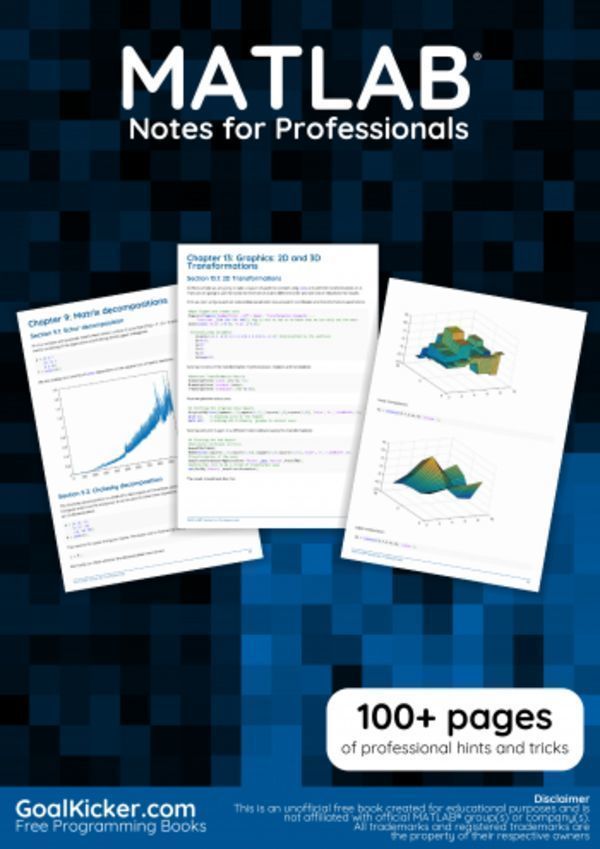
MATLAB Notes for Professionals book
"The MATLAB® Notes for Professionals book is compiled from Stack Overflow Documentation, the content is written by the beautiful people at Stack Overflow. Text content is released under Creative Commons BY-SA. See credits at the end of this book whom contributed to the various chapters. Images may be copyright of their respective owners unless otherwise specified Book created for educational purposes and is not affiliated with MATLAB® group(s), company(s) nor Stack Overflow. All trademarks belong to their respective company owners 179 pages, published on January 2018" [...]
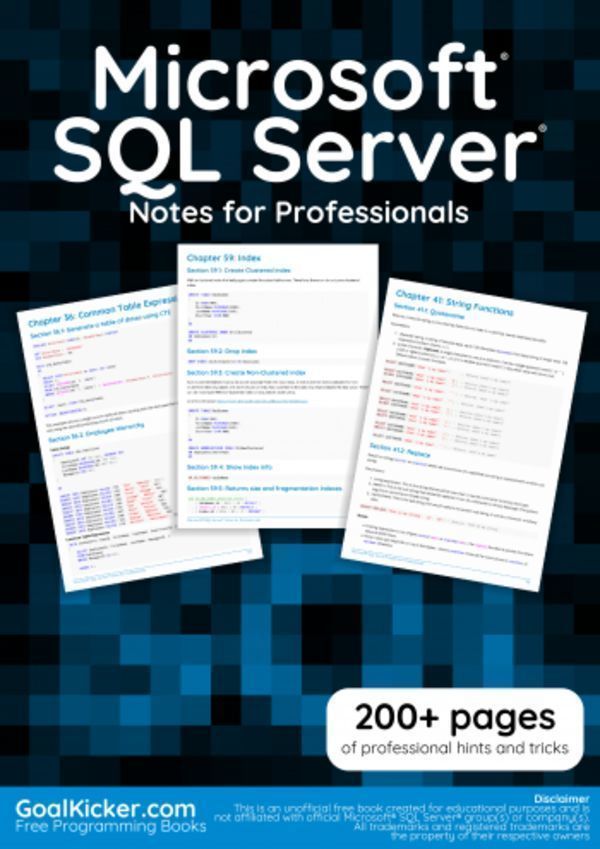
Microsoft SQL Server Notes for Professionals book
"The Microsoft® SQL Server® Notes for Professionals book is compiled from Stack Overflow Documentation, the content is written by the beautiful people at Stack Overflow. Text content is released under Creative Commons BY-SA. See credits at the end of this book whom contributed to the various chapters. Images may be copyright of their respective owners unless otherwise specified Book created for educational purposes and is not affiliated with Microsoft® SQL Server® group(s), company(s) nor Stack Overflow. All trademarks belong to their respective company owners 285 pages, published on January 2018" [...]
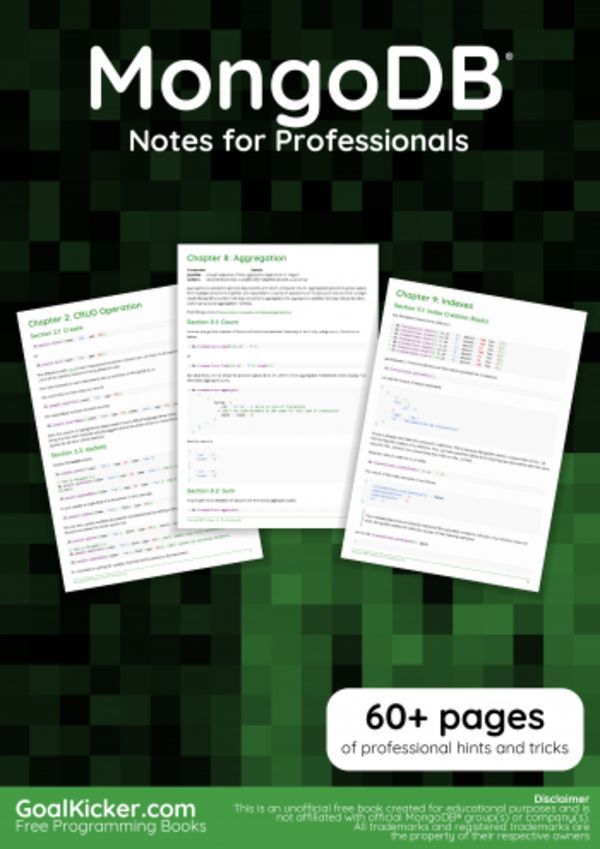
MongoDB Notes for Professionals book
"The MongoDB® Notes for Professionals book is compiled from Stack Overflow Documentation, the content is written by the beautiful people at Stack Overflow. Text content is released under Creative Commons BY-SA. See credits at the end of this book whom contributed to the various chapters. Images may be copyright of their respective owners unless otherwise specified Book created for educational purposes and is not affiliated with MongoDB® group(s), company(s) nor Stack Overflow. All trademarks belong to their respective company owners 73 pages, published on January 2018" [...]

MySQL Notes for Professionals book
"The MySQL™ Notes for Professionals book is compiled from Stack Overflow Documentation, the content is written by the beautiful people at Stack Overflow. Text content is released under Creative Commons BY-SA. See credits at the end of this book whom contributed to the various chapters. Images may be copyright of their respective owners unless otherwise specified Book created for educational purposes and is not affiliated with MySQL™ group(s), company(s) nor Stack Overflow. All trademarks belong to their respective company owners 197 pages, published on January 2018" [...]
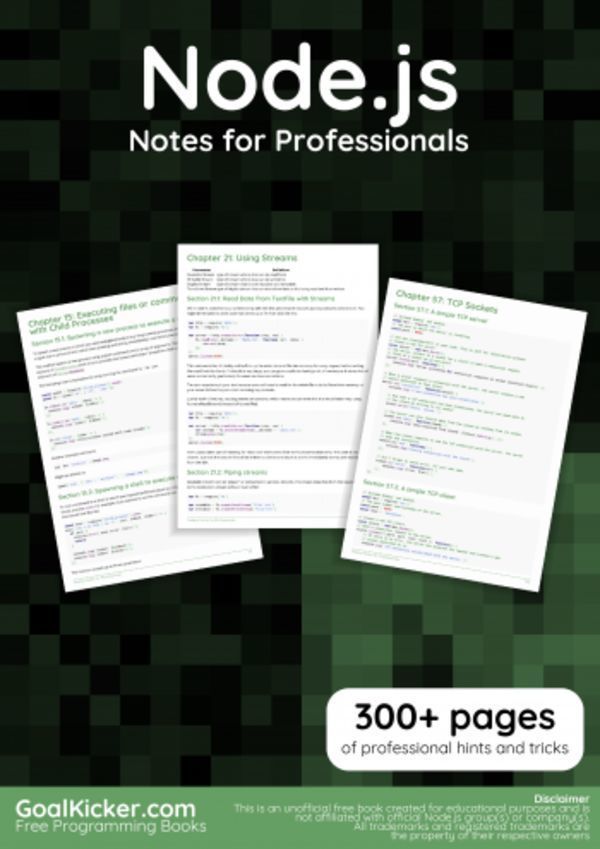
Node.js Notes for Professionals book
"The Node.js Notes for Professionals book is compiled from Stack Overflow Documentation, the content is written by the beautiful people at Stack Overflow. Text content is released under Creative Commons BY-SA. See credits at the end of this book whom contributed to the various chapters. Images may be copyright of their respective owners unless otherwise specified Book created for educational purposes and is not affiliated with Node.js group(s), company(s) nor Stack Overflow. All trademarks belong to their respective company owners 332 pages, published on January 2018" [...]

Objective-C Notes for Professionals book
"The Objective-C® Notes for Professionals book is compiled from Stack Overflow Documentation, the content is written by the beautiful people at Stack Overflow. Text content is released under Creative Commons BY-SA. See credits at the end of this book whom contributed to the various chapters. Images may be copyright of their respective owners unless otherwise specified Book created for educational purposes and is not affiliated with Objective-C® group(s), company(s) nor Stack Overflow. All trademarks belong to their respective company owners 129 pages, published on January 2018" [...]
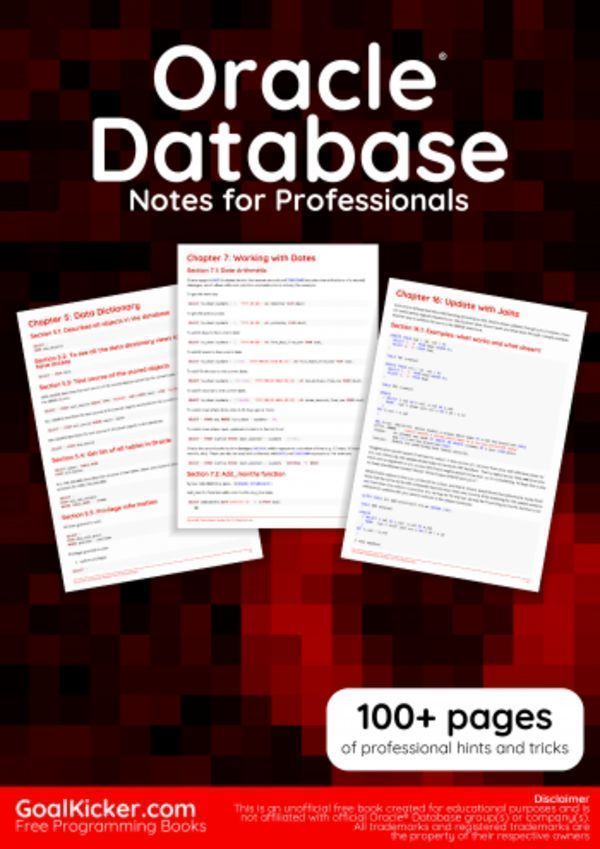
Oracle Database Notes for Professionals book
"The Oracle® Database Notes for Professionals book is compiled from Stack Overflow Documentation, the content is written by the beautiful people at Stack Overflow. Text content is released under Creative Commons BY-SA. See credits at the end of this book whom contributed to the various chapters. Images may be copyright of their respective owners unless otherwise specified Book created for educational purposes and is not affiliated with Oracle® Database group(s), company(s) nor Stack Overflow. All trademarks belong to their respective company owners 118 pages, published on January 2018" [...]

Perl Notes for Professionals book
"The Perl® Notes for Professionals book is compiled from Stack Overflow Documentation, the content is written by the beautiful people at Stack Overflow. Text content is released under Creative Commons BY-SA. See credits at the end of this book whom contributed to the various chapters. Images may be copyright of their respective owners unless otherwise specified Book created for educational purposes and is not affiliated with Perl® group(s), company(s) nor Stack Overflow. All trademarks belong to their respective company owners 109 pages, published on January 2018" [...]

PHP Notes for Professionals book
"The PHP Notes for Professionals book is compiled from Stack Overflow Documentation, the content is written by the beautiful people at Stack Overflow. Text content is released under Creative Commons BY-SA. See credits at the end of this book whom contributed to the various chapters. Images may be copyright of their respective owners unless otherwise specified Book created for educational purposes and is not affiliated with PHP group(s), company(s) nor Stack Overflow. All trademarks belong to their respective company owners 478 pages, published on January 2018" [...]
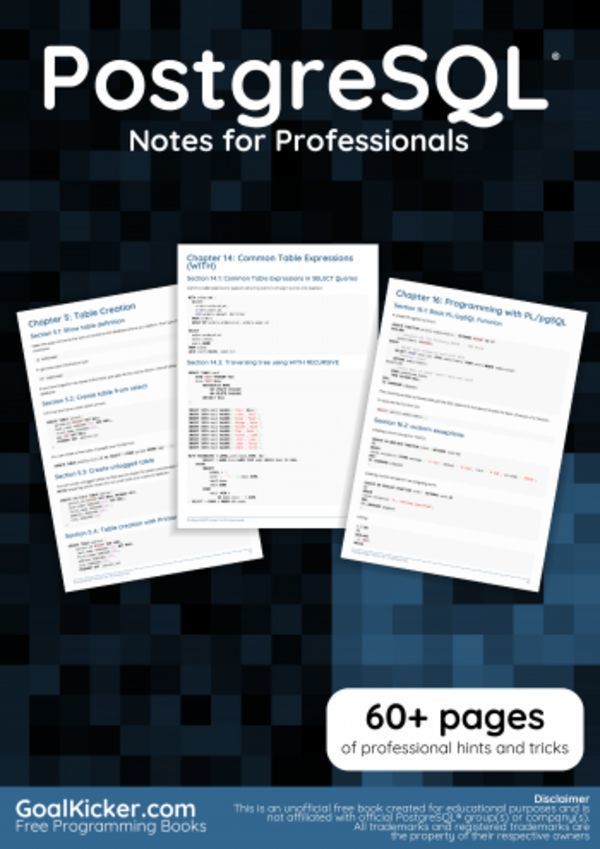
PostgreSQL Notes for Professionals book
"The PostgreSQL® Notes for Professionals book is compiled from Stack Overflow Documentation, the content is written by the beautiful people at Stack Overflow. Text content is released under Creative Commons BY-SA. See credits at the end of this book whom contributed to the various chapters. Images may be copyright of their respective owners unless otherwise specified Book created for educational purposes and is not affiliated with PostgreSQL® group(s), company(s) nor Stack Overflow. All trademarks belong to their respective company owners 73 pages, published on January 2018" [...]
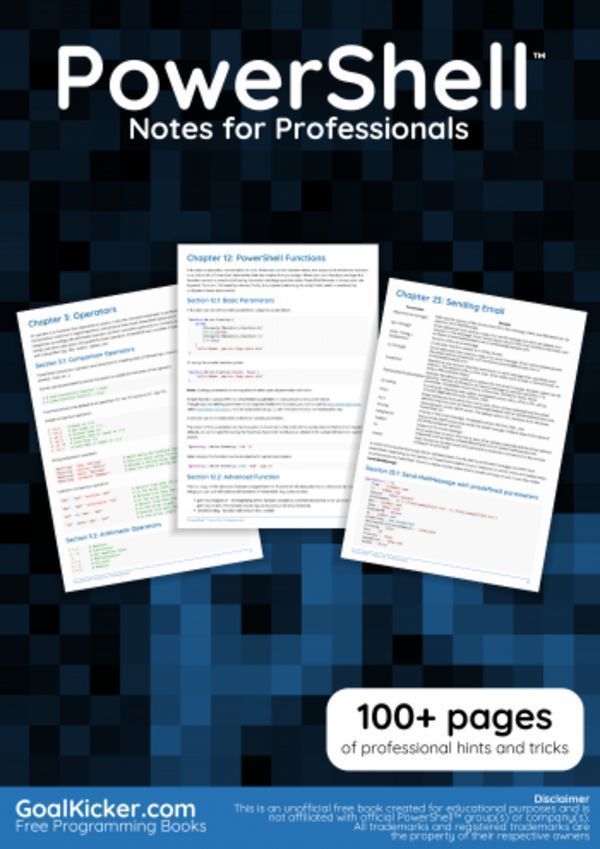
PowerShell Notes for Professionals book
"The PowerShell™ Notes for Professionals book is compiled from Stack Overflow Documentation, the content is written by the beautiful people at Stack Overflow. Text content is released under Creative Commons BY-SA. See credits at the end of this book whom contributed to the various chapters. Images may be copyright of their respective owners unless otherwise specified Book created for educational purposes and is not affiliated with PowerShell™ group(s), company(s) nor Stack Overflow. All trademarks belong to their respective company owners 184 pages, published on January 2018" [...]
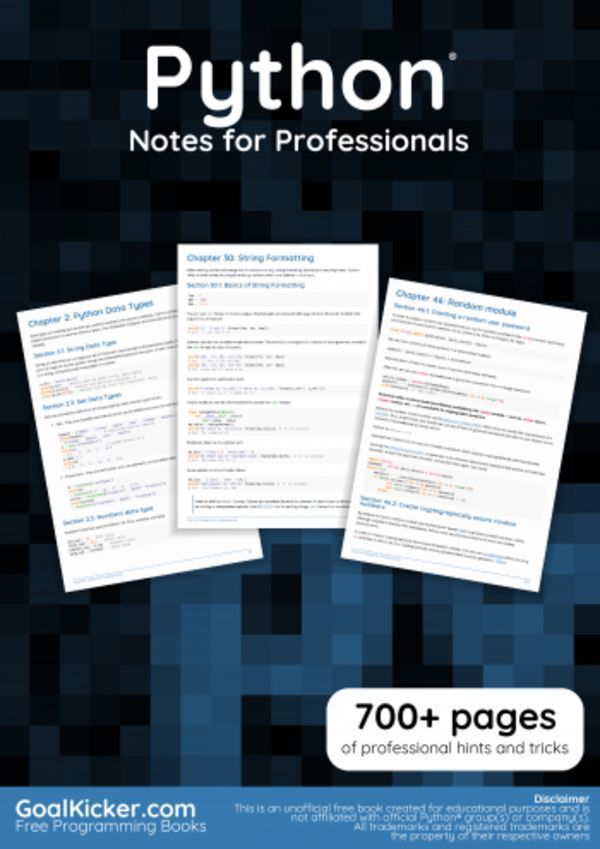
Python Notes for Professionals book
"The Python® Notes for Professionals book is compiled from Stack Overflow Documentation, the content is written by the beautiful people at Stack Overflow. Text content is released under Creative Commons BY-SA. See credits at the end of this book whom contributed to the various chapters. Images may be copyright of their respective owners unless otherwise specified Book created for educational purposes and is not affiliated with Python® group(s), company(s) nor Stack Overflow. All trademarks belong to their respective company owners 814 pages, published on January 2018" [...]
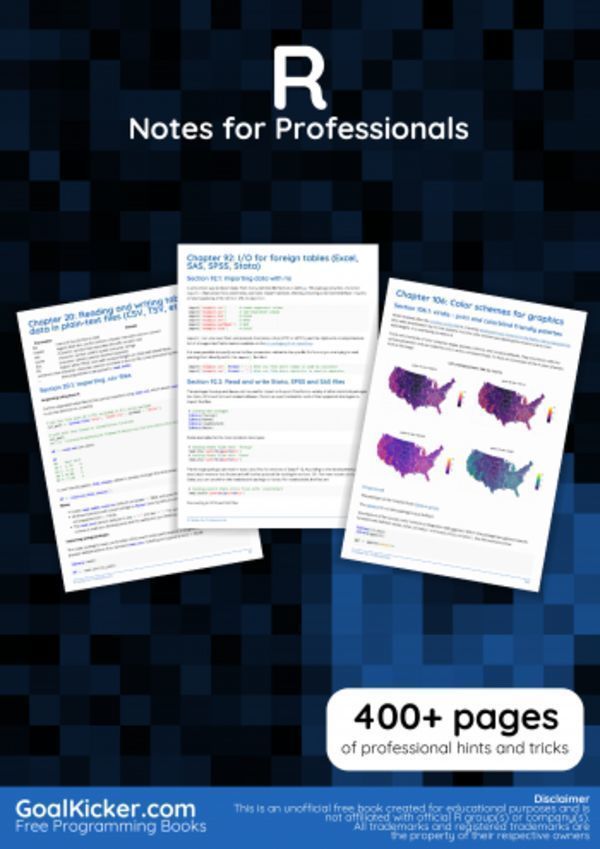
R Notes for Professionals book
"The R Notes for Professionals book is compiled from Stack Overflow Documentation, the content is written by the beautiful people at Stack Overflow. Text content is released under Creative Commons BY-SA. See credits at the end of this book whom contributed to the various chapters. Images may be copyright of their respective owners unless otherwise specified Book created for educational purposes and is not affiliated with R group(s), company(s) nor Stack Overflow. All trademarks belong to their respective company owners 472 pages, published on January 2018" [...]
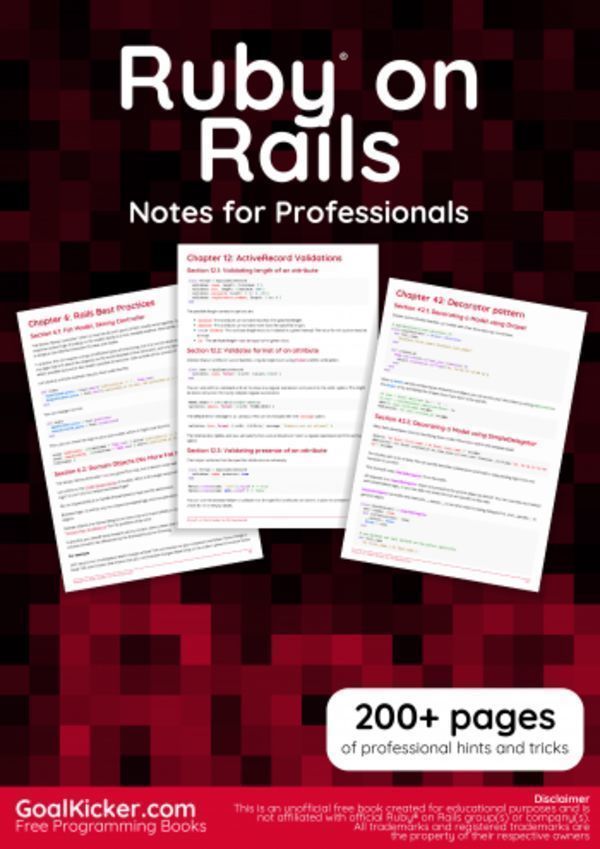
Ruby on Rails Notes for Professionals book
"The Ruby® on Rails Notes for Professionals book is compiled from Stack Overflow Documentation, the content is written by the beautiful people at Stack Overflow. Text content is released under Creative Commons BY-SA. See credits at the end of this book whom contributed to the various chapters. Images may be copyright of their respective owners unless otherwise specified Book created for educational purposes and is not affiliated with Ruby® on Rails group(s), company(s) nor Stack Overflow. All trademarks belong to their respective company owners 227 pages, published on January 2018" [...]
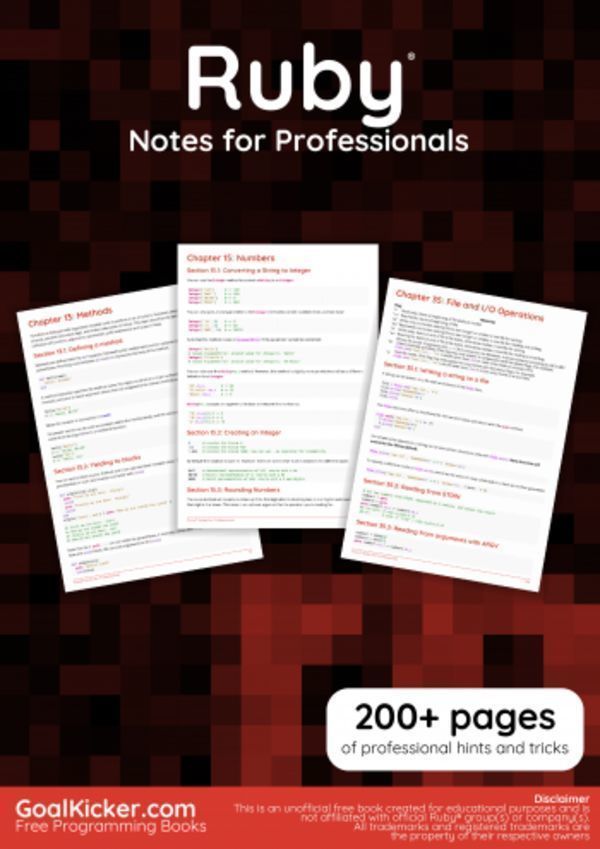
Ruby Notes for Professionals book
"The Ruby® Notes for Professionals book is compiled from Stack Overflow Documentation, the content is written by the beautiful people at Stack Overflow. Text content is released under Creative Commons BY-SA. See credits at the end of this book whom contributed to the various chapters. Images may be copyright of their respective owners unless otherwise specified Book created for educational purposes and is not affiliated with Ruby® group(s), company(s) nor Stack Overflow. All trademarks belong to their respective company owners 236 pages, published on January 2018" [...]
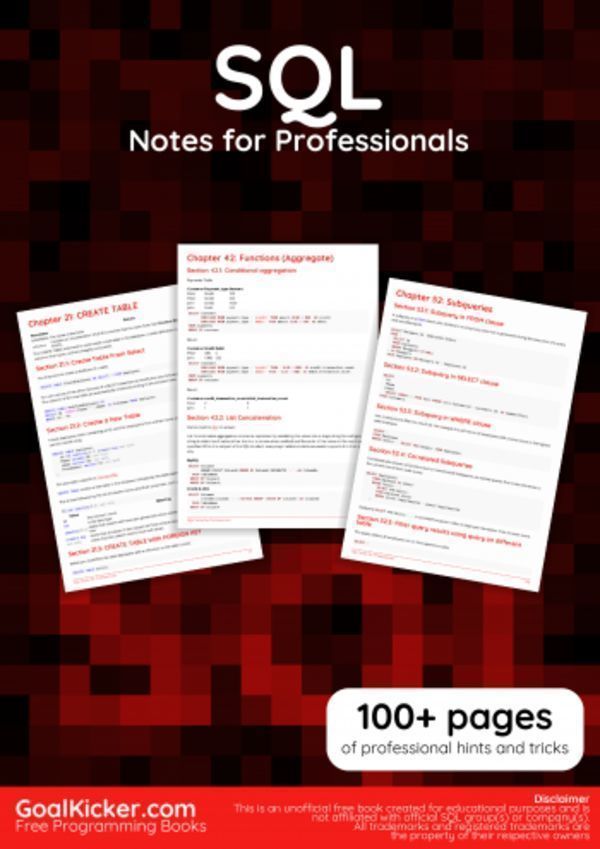
SQL Notes for Professionals book
"The SQL Notes for Professionals book is compiled from Stack Overflow Documentation, the content is written by the beautiful people at Stack Overflow. Text content is released under Creative Commons BY-SA. See credits at the end of this book whom contributed to the various chapters. Images may be copyright of their respective owners unless otherwise specified Book created for educational purposes and is not affiliated with SQL group(s), company(s) nor Stack Overflow. All trademarks belong to their respective company owners 164 pages, published on January 2018" [...]
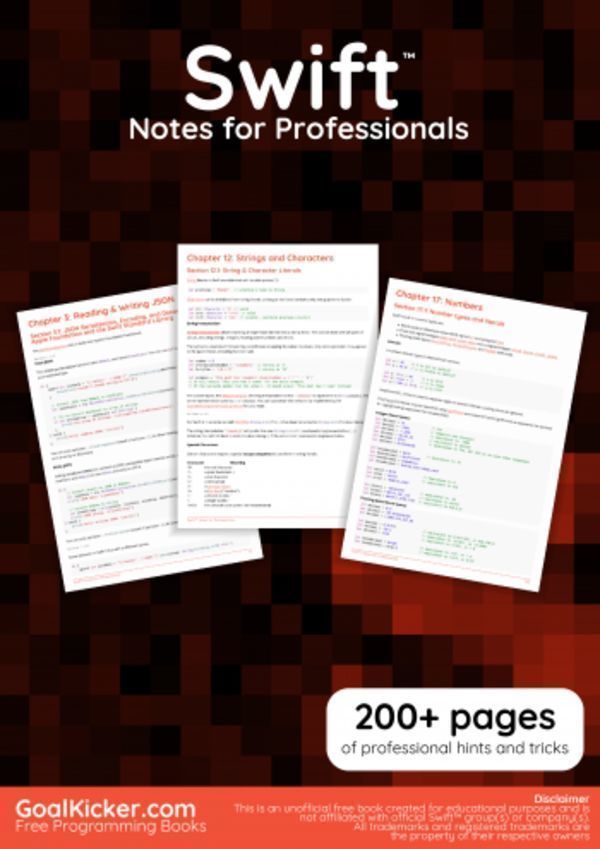
Swift Notes for Professionals book
"The Swift™ Notes for Professionals book is compiled from Stack Overflow Documentation, the content is written by the beautiful people at Stack Overflow. Text content is released under Creative Commons BY-SA. See credits at the end of this book whom contributed to the various chapters. Images may be copyright of their respective owners unless otherwise specified Book created for educational purposes and is not affiliated with Swift™ group(s), company(s) nor Stack Overflow. All trademarks belong to their respective company owners 289 pages, published on January 2018" [...]

TypeScript Notes for Professionals book
"The TypeScript Notes for Professionals book is compiled from Stack Overflow Documentation, the content is written by the beautiful people at Stack Overflow. Text content is released under Creative Commons BY-SA. See credits at the end of this book whom contributed to the various chapters. Images may be copyright of their respective owners unless otherwise specified Book created for educational purposes and is not affiliated with TypeScript group(s), company(s) nor Stack Overflow. All trademarks belong to their respective company owners 97 pages, published on January 2018" [...]

VBA Notes for Professionals book
"The VBA Notes for Professionals book is compiled from Stack Overflow Documentation, the content is written by the beautiful people at Stack Overflow. Text content is released under Creative Commons BY-SA. See credits at the end of this book whom contributed to the various chapters. Images may be copyright of their respective owners unless otherwise specified Book created for educational purposes and is not affiliated with VBA group(s), company(s) nor Stack Overflow. All trademarks belong to their respective company owners 201 pages, published on January 2018" [...]

Visual Basic .NET Notes for Professionals book
"The Visual Basic® .NET Notes for Professionals book is compiled from Stack Overflow Documentation, the content is written by the beautiful people at Stack Overflow. Text content is released under Creative Commons BY-SA. See credits at the end of this book whom contributed to the various chapters. Images may be copyright of their respective owners unless otherwise specified Book created for educational purposes and is not affiliated with Visual Basic® .NET group(s), company(s) nor Stack Overflow. All trademarks belong to their respective company owners 149 pages, published on January 2018" [...]
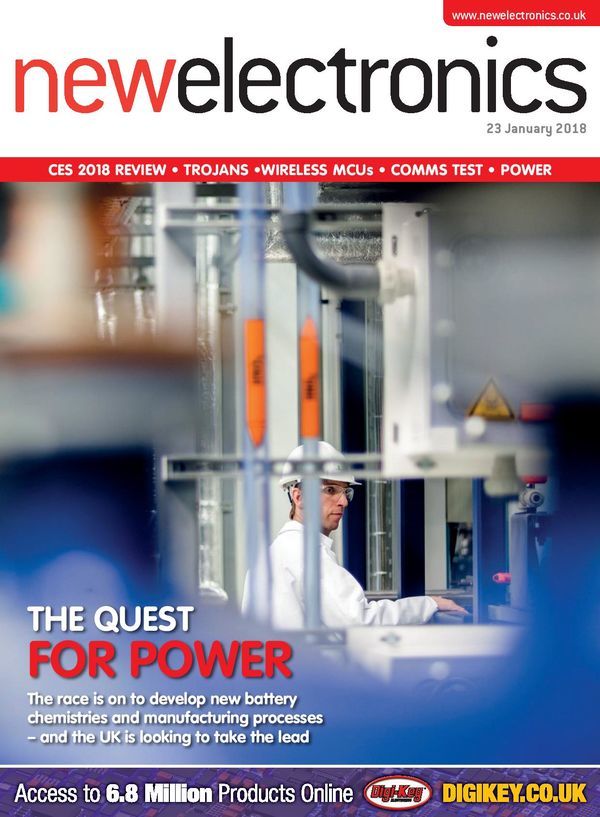
newelectronics 23 Janeiro 2018
"New Electronics is a fortnightly magazine focusing on technological innovation, news and the latest developments in the electronics sector. Downloadable as a digital page turner or pdf file, or offered as a hard copy, the New Electronics magazine is available in a format to suit you. " [...]
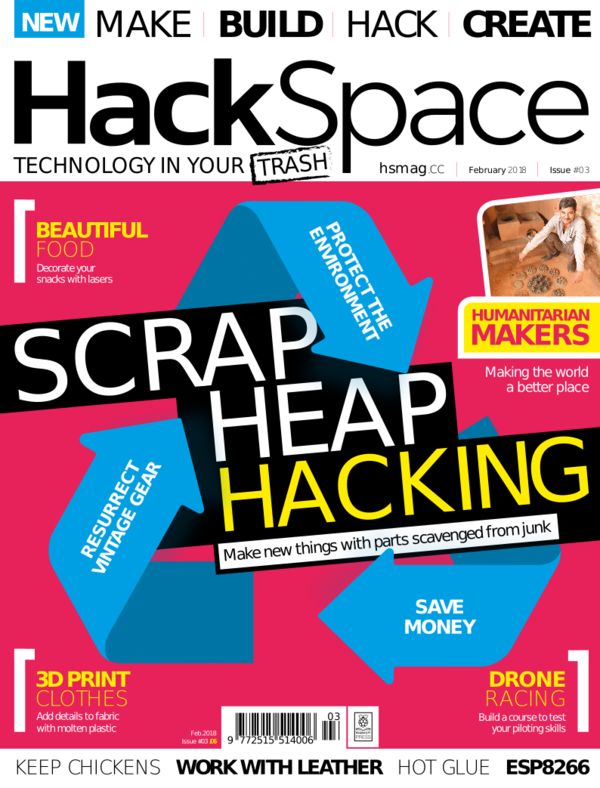
HackSpace magazine #3
"In HackSpace magazine issue 3, we look at great builds you can make with parts salvaged from broken bits of technology, meet a group of makers working in disaster zones, learn how to 3D print textures onto you clothes and much more: - Learn how to use an oscilloscope - Build a drone race track - Use silver soldering to build a toolbox - Discover the best laser cutting software - Find out how to build an automatic chicken door opener" [...]
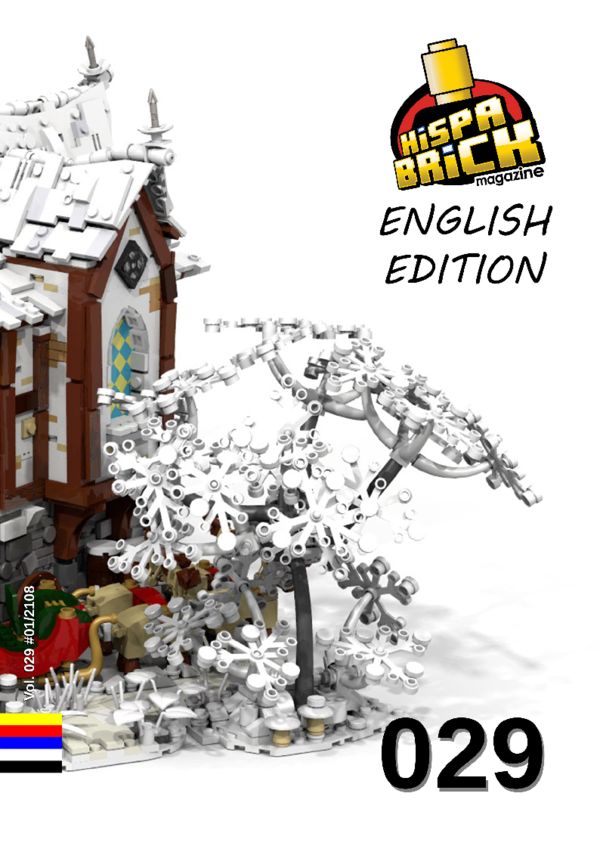
HispaBrick issue 29
"It’s time for a new edition of the magazine for AFOLs. In this edition of HispaBrick Magazine we continue our collaboration with Kockice, which brings us articles on LEGO® Architecture, MINDSTORMS and an interesting Minidolls vs. Minifigures. From our visit to the LEGO Fan Media Days en Billund we bring you our interview of LEGO® Friends designers Fenella Charity and Ricardo Silva and our visit to the pre-opening of the LEGO® House. We have tutorials on taking pictures of LEGO® and programming LEGO Boost, as well as building instructions from collaborating AFOLs. Our TopMoc section is all about what can be done with digital building, we keep expanding on the MILS system and we have reviews of a number of new sets, including the 10260 - Downtown Diner. We will also show you what our HispaBrick Magazine Event 2017 from last December was like and there are many more articles." [...]
Projetos Maker
Diversos Projetos interessantes.
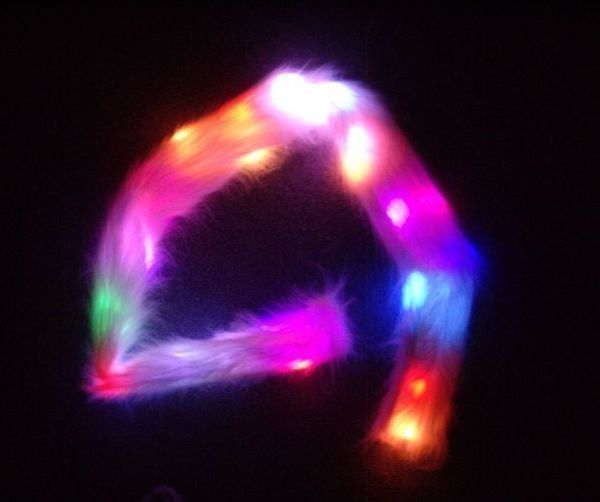
Interactive Sleeves - Led Fire Animation
"A fire starts when a person or object comes near your arms. It literally creates the spark between you and another person. " [...]

Ternary chord keyboard
"In my heart I know we are stuck with the QWERTY keyboard but that doesn’t stop me wanting something different. I have thought about switching to Dvorak or Colemak key assignments but don’t want to deal with the problem of mental interference when I have to switch back to a normal keyboard. On a search for alternate keyboards I came across the Accukey, a ternary chord keyboard [1]. The keyboard consists of 8 switches designed pushed or pulled from a center off position, one per finger. The switches are used in pairs, 1 left 1 right, to form a chord giving a total of 64 combinations. My thinking is that this radically different keying method would give minimal interference to the typing skills that I have already." [...]

Arduino - Rotating Led On Movement - Wearable Item (Inspired By Chronal Accelerator Tracer Overwatch)
"This instructable will help you to connect a Accelerometer and a Neopixel Led-ring. I will provide the code to read de accelerometer and get this effect with your neopixel animation. For this project I used the Adafruit 24bit Neopixel ring, and the MPU 6050. The MPU 6050 combines a gyroscope with an accelerometer. I only used the last one for this project. " [...]
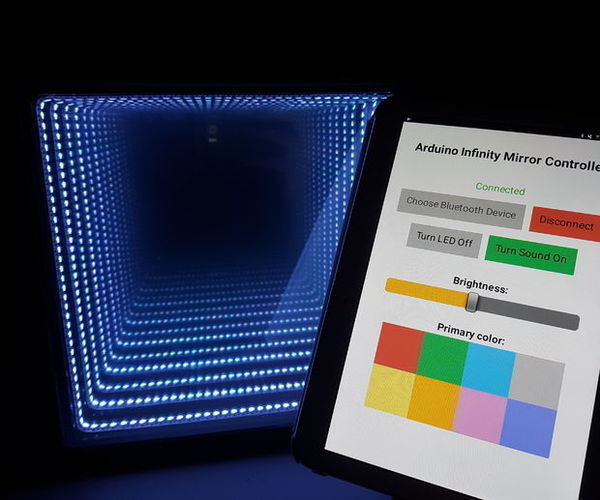
Arduino Infinity Mirror (Bluetooth & Sound Reactive)
"I created an Infinity Mirror for a school project with Arduino which you can control with your phone or tablet by using Bluetooth. The mirror also has a built-in microphone which detects sound/music and reacts accordingly by generating eye-catching light strobes on the beat of the music! Simply start up the app, connect to bluetooth and see the magic happen! In this Instructables I will show you how you can make this Infinity Mirror. So let's get started! " [...]

Tutorial - Build a ManyKey Macro Keyboard
"So you want to build a ManyKey macro keyboard? That's great! The first thing you'll want to do is decide the form-factor of your keyboard. Do you want a neat package that sits on your desk? Buttons for your feet to control? Something else entirely?" [...]
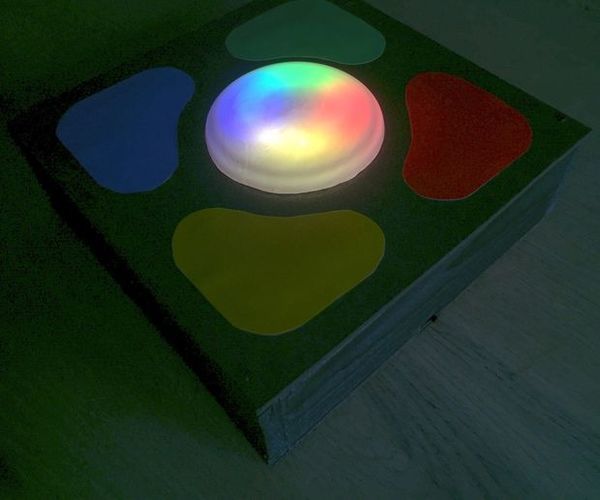
Memory Game With Touch (Simon Says) - If This Then That
"I made a memory game with self-made touch pads and a neopixel ring for a schoolproject. This game is similar to Simon Says except that many forms of input and feedback (sounds and light effects) in the game are different. I programmed sounds from Super Mario, The Legend Of Zelda and Sonic The Hedgehog with the pitches library. As a finishing touch I added a high score and speed changer in the game menu. The player will get to the game menu when a game is finished or the device is turned on. This Arduino device is made to be portable." [...]
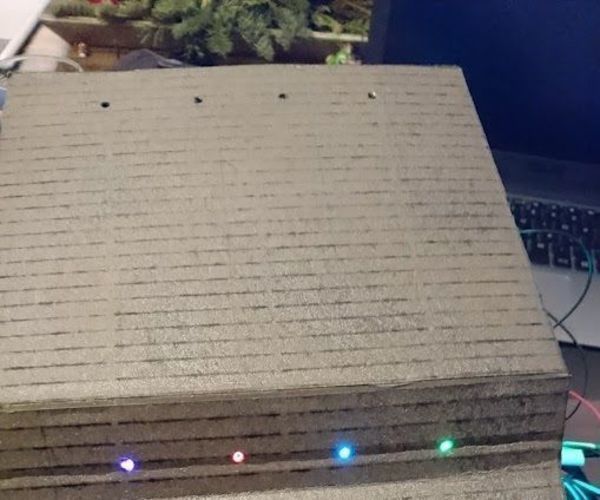
Mastermind Game /W Arduino Uno
"This project was for the most part a programming challenge for myself, since this was the first time I've written anything in C/C++ and the first time I've worked with Arduino. " [...]
"Rob": The Ultimate R/C Neopixel/Ws2812B Led Display Platform
"About a year ago, I went out and got myself 5 meters of WS2812B LEDs, more commonly referred to as "NeoPixels" although mine aren't from Adafruit. A few weeks ago, I finally figured out how to use them. So, with my new knowledge, I went out and tried to find something fun to do with them. VU Meter? Yup, did that. Spectrum Analyzer?" [...]
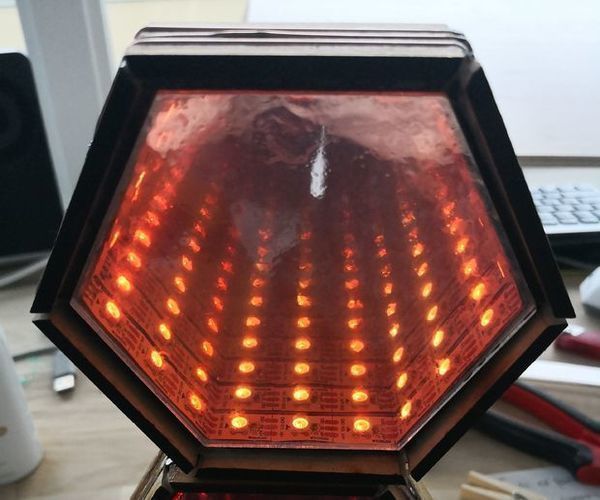
Stackable Hexagon Infinity Mirrors
"So I got an Arduino and this is the first project I made. I got my inspiration while I was looking on this site and tried to make a simple project for myself. Coding isnt my strong part so I had to keep it simple and wanted to make it more complex with the analog part. What I used: -Arduino Uno -NeoPixel LEDstrip 60LEDS -Wires and solder stuff -MDF 4mm -Acryl 3mm -Metal wire 0,8mm -Metal wire 1,6mm -Mirror foil -Wood glue and multi glue" [...]

Lets Make A Magic Crystal Ball With Magic Spells! ~ Arduino ~
"In this, we're gonna make a Magic Ball that uses a motion sensor and an RFID scanner to control the animations of the LED lights inside. " [...]
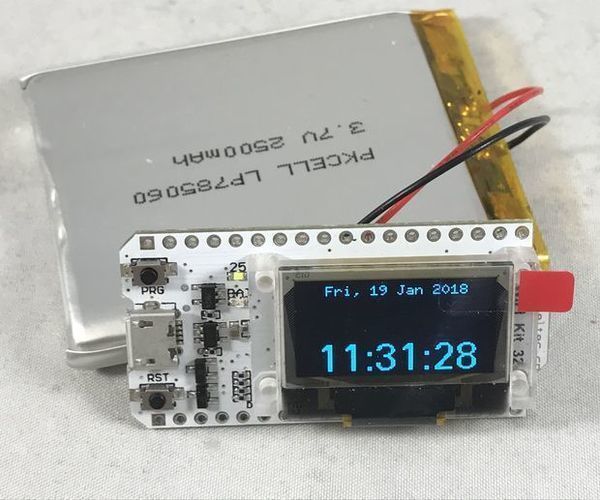
Wifi Kit 32 Ntp Clock
"WiFi Kit 32 NTP Clock is another of my learning forays into the numerous features of the ESP32. During startup, the clock obtains the current date and time from an ntp server, adjusts for time zones (see the Software step), writes the result to the ESP32 rtc (real time clock), then uses the ESP32 rtc to update the built in OLED display with the date and time. The source code is included in the Software step and should be documented well enough to explain how it works. If you have any questions, please feel free to comment and I will do my best to answer them. " [...]
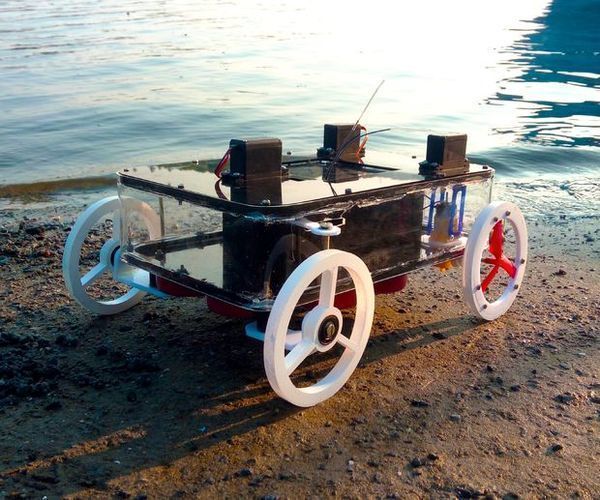
Arduino Rc Amphibious Rover
"Over the last couple of months we have been developing a remote controlled rover that can move both on land and on water. Although a vehicle with similar features uses different mechanisms for propulsion we tried to achieve all the means of propulsion by using wheels alone. The vehicle consists of a floating platform with a pair of wheels that are integrated with a propeller. At the heart of the system is the versatile Arduino UNO which control the motors and various mechanisms. Follow on to see the transformation between the terrestrial and the aquatic form of the Amphibious Rover! If you liked the project do vote for us in the contests (on top right corner)" [...]
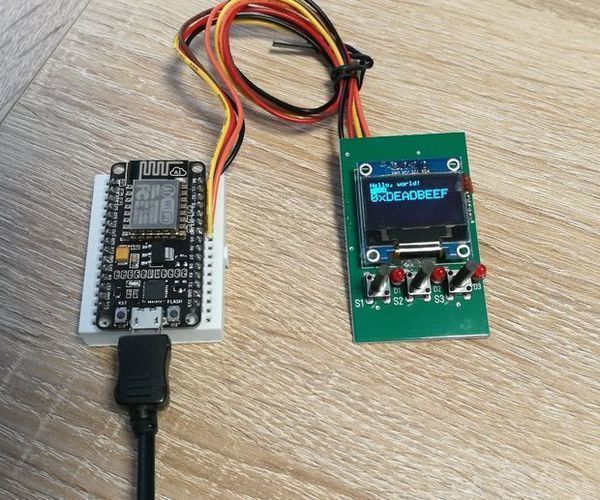
How To Connect Nodemcu / Esp8266 And Oled Shield
"I will show in this instructable how to connect a NodeMCU V2 Amica (ESP8266) via I2c to an OLED display based on the famous SSD1306 chip. For the OLED we will use in this instructable an OLED Shield which comes with the solderes 0,96" inch OLED and 3 button + 3 LEDs connected to an MCP23008.... It's very easy to realise menu systems and other complex function with this shield ....." [...]
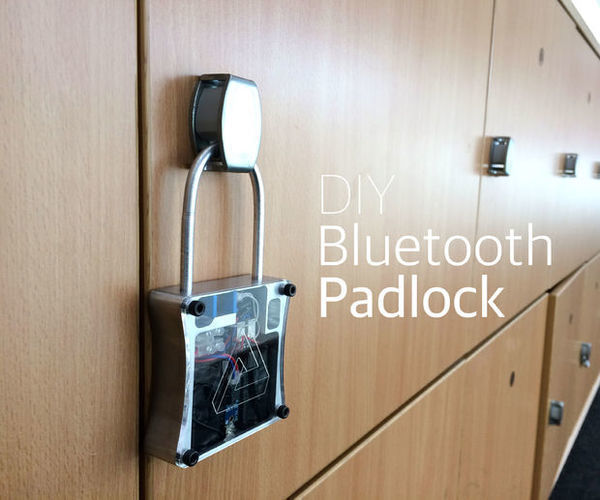
Bluetooth Padlock
"Ever lost padlock keys or forgotten the code to your incredibly strong padlock and can't open your locker? Imagine a padlock which can be opened with a tap on an object which everyone now carries around and rarely forgets... Well ladies and gentlemen the future is here. I present to you a fully functional bluetooth padlock which can be unlocked from your phone and your smartwatch! This project was for my GCSE's which I got an A* for however this is definitely a prototype made with a tight deadline and there are many aspects of this padlock that I would like to change. This is merely a guideline so please experiment with other parts and ways of building the padlock. Finally if you enjoy this Instructable please do vote for me in the competition and feel free to leave a comment if you have any questions." [...]
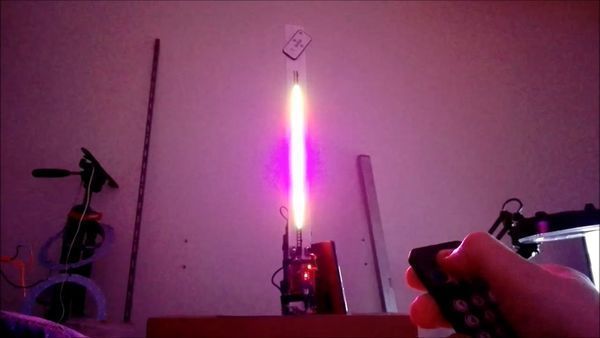
VU Meter on Steroids: Arduino Nano and WS2812Bs
"Responds to sound or can be set on automatic, all by IR. Or switch. WS2812B VU Bar on Uno or Nano. CHECK MY OTHER VU PROJECTS. And Builds. " [...]
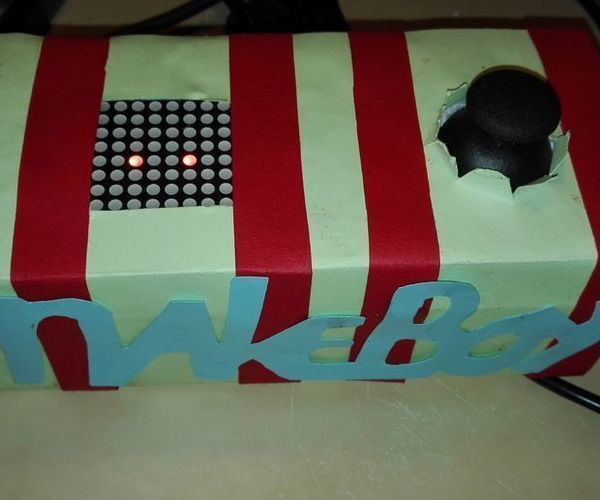
Portable Snake
"This is a tutorial on how to make your own portable snake game! All you need is an arduino, some electronics and some way to case the whole thing. Here is a list of all the needs: - Arduino uno (1) - Joystick module (1) - Led Matrix (1) - some wires (10 male to female and 2 male to male) - batteries (to make it fully portable) (7-12V recommended) - breadboard (for prototyping) - materials to make a case (you can make a case in various ways). " [...]

Ittt Arduino Vulploeg Timer
"In this instructable you will learn how to make a single filling timer to keep track of the times of fillers. It consists of a keypad to enter data, a display to show the data, 2 buttons for addition and subtraction and an RGB LED to make clearer what you are doing. By means of the buttons you can very easily count the number of collie (= boxes) of the fillers and the time to stare. This data is then stored in a database. When someone finishes filling you stop the time and the results can be seen in an app developed for that purpose. The device that I make here is set up for Kruidvat, but in principle it can also be used for other companies." [...]
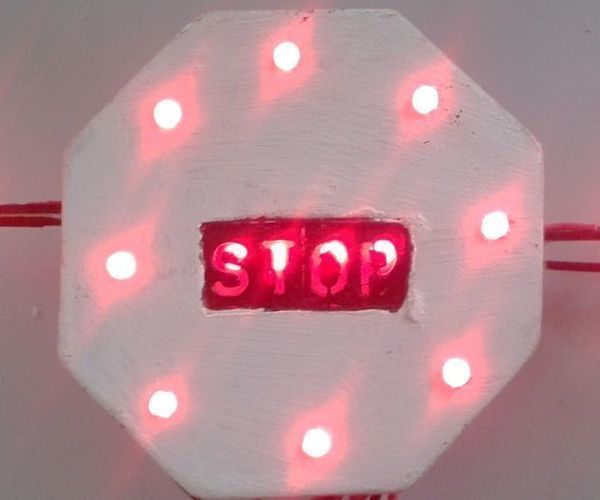
Garage Parking Assistant
"Hi everyone, so......I have the tennis ball hanging from the roof in my garage to show where to stop when parking in the garage. (You know.....the one that constantly lobs you in the head when you walk around in your garage!) :o This does not solve the entire problem though and it is a very old solution, so I thought Id get rid of the ball and move into the 21st century with some leds, ldrs, sensors etc. This does not only show you when you are close to the front, but monitors the sides as well, so you dont hit stuff on the side and it even helps give you enough space to open your door........lol. The project requires no expert knowledge of electronics or anything, ANYONE CAN MAKE IT. " [...]
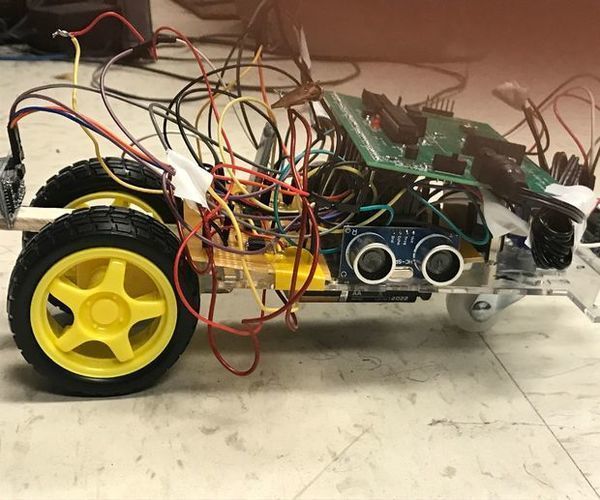
Robot Car Bluetooth Controlled- Obstacle Avoidance Robot Car Using Pic32 Microcontroller
""Robot-Car: Design Fused with Obstacle Avoidance Technology" Recently, there is an intensive research undertaken in the field of intelligence robotics and autonomous mobile robot applications. Through the this project we wanted to explore this field by building a robot car that can potentially avoid the obstacles. This is a user controlled robot car that has been integrated with ultrasonic sensors to get the information from the surrounding area and thereby avoid any kind of obstacle collisions.This is a robot car that can be remotely controlled using a Bluetooth terminal mobile/PC application and has the capability to avoid the collision with the obstacles. Essentially when the user gives a command that can potentially lead to an obstacle collision the bot overrides his command and stops avoiding any major damage. The robot car in the project can be made to move in six directions (Forward, Backward, Front right, Front left, Back right and Back left). The system includes a PIC32 microcontroller that forms the heart of the system .The Dc motors, Bluetooth module are interfaced to the microcontroller and the data received by the Bluetooth terminal application by the user is processed by the microcontroller to perform the necessary operations." [...]
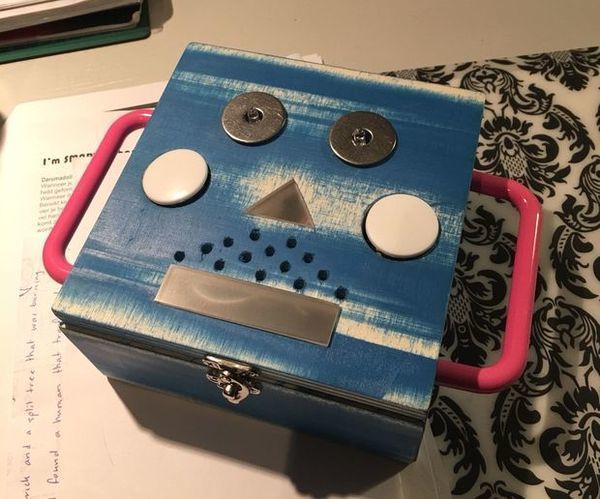
"Hot Potato" Retro Robot
"Intro: For my schoolproject I decided to make a "Hot Potato" game packaged in a retro robot. The challenge was to make something interactive and unique, and this was kind of the first thing that came to mind that I really liked and wanted to experiment with. I really like the outcome and hope to share my process on how I made this little buddy so you can make one yourself and (hopefully) try and play this with someone else! " [...]

MQTTCarPresense
"This project utilizes a WeMos D1 mini Pro, u.FL to SMA antenna whip, and an external antenna in a 3D-printed enclosure to indicate presense when powered on and attached to MQTT. The included Arduino code is setup to work with Home Assistant MQTT Discovery to automatically create a binary_sensor device which will indicate the connection status of the device. The device should be powered from your car's ignition so it's only on when the car is running. When the device powers on, it will attempt to connect to the defined MQTT broker, publishes a discovery message, and configures a Last Will and Testament. When the device is powered off (or you drive out of WiFi range), the Last Will and Testament is sent by your broker to update subscribed automation system(s). The included Home Assistant automation example utilizes this information to open or close a connected garage door." [...]

Joystick Controlled Remote Car
"We always are interested in remote controlled cars. Here I'll show a way to use the Joystick module with Arduino and build a remote controlled car using Infra-Red as the transmitting medium.This will be an interesting project for a wireless car and will be interactive too since it uses joystick that we use in our XBOX or Play-Station. And another thing is that it will be the cheapest way of communication. " [...]

Attiny85 Distance Finder
"Before I made this instructable I had just gotten some new Attinys (Attinies?) and wanted to make something with them. That's when I noticed my ultrasonic range finder all alone being unused. This ultrasonic Attiny distance finder gives the distance through a series of flashing LEDs and can even be switched from CM to IN by holding the button for long enough. " [...]

Modular DIY CNC Machine
"I'm a recent college grad with a degree in Mechanical Engineering and love to build things. For my job I get to design and integrate parts of large, expensive satellite assemblies, however I don't get much hands on work with what I design due to the scale. I've always been interested in CNC machines and laser cutters/engravers, but I never really had the money or space to buy one myself. I decided to put my engineering background to the test, and build my own CNC machine with the ability to be upgraded and use the least amount of tools possible. This Instructable includes what I've designed and how to follow these steps to create your own machine. For the first iteration and documentation of my design, refer to my original Instructable: Modular DIY CNC Machine for ~$300." [...]
Neopixel Lightsabers W/ Party Modes - Arduino Controlled
"This project started as part of my Halloween costume, and then expanded...a lot. I ended up making two lightsabers - a Kylo Ren style saber and a Rey / Anakin Skywalker style saber, and creating different Arduino code to simulate each. And, I decided to go beyond the normal lightsaber, and create a party mode with colorful animations on the saber. (You definitely want to watch until the end of the video to see Kylo's reaction when he tries out his newly constructed saber, and finds out it also has the party mode.) Now that the work is done, this Instructable shows how you can create this saber with inexpensive parts (about $75 for each saber), and simply upload the code I've linked to in this instructable, rather than having to code for the Arduino yourself. Note on the code (links later) -- I was particularly happy with the code for the Kylo Ren saber for a couple reasons: (a) it imitates the sparking look of his unstable blade better than others I've seen, (b) the power on effect delays the side blades until just after the main blade powers just as in the movies (for those not obsessed with sabers, the side blades are exhaust vents for Kylo's unstable blade, and thus do not come on until the main blade is lit)." [...]

Custom Arduino To Keep Can Steering Wheel Buttons With New Car Stereo
"I decided to replace the original car stereo in my Volvo V70 -02 with a new stereo so I will be able to enjoy stuff like mp3, bluetooth and handsfree. My car has some steering wheel controls for the stereo that I would like to still be able to use. I didn't expect that to be a problem because there are several adapters on the market that are supposed to be compatible with my car. However I soon found out that they were not! (It seems like the adapters for V70 might have problems with -02 cars due to a slightly different CAN protocol.) So what to do then?" [...]

Arduino Hot-Key Button Panel
"At first I was just going to make a single Hot-key button so I could control my laptop without having to roll my chair over to it. Then I remembered I had a bunch of these "arcade" style buttons so I figured, why not make a panel of buttons? These are great for programming all sorts of commands for quick access. This project uses the Adafruit Trinket M0 to act like a keyboard and trick your computer by mimicking key presses. The video goes into detail on how the program works as well as two different methods to build the body. This instructable covers both ways to build it!" [...]
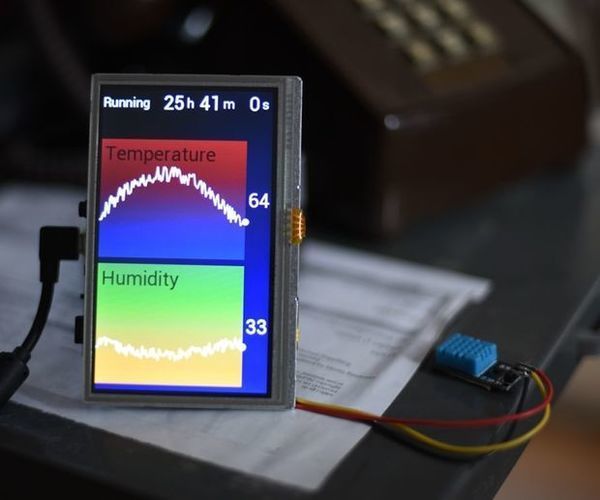
Arduino 24 Hour Temperature Humidity Display
"The DHT11 is a great sensor to get started with. It's cheap and easy to hook up to an Arduino. It reports temperature and humidity with about 2% accuracy, and this instructable uses a Gameduino 3 as a graphical display, showing 24 hours of history. " [...]

Kevin The Full Autonomous Vehicle
"This is Kevin. It is radio controlled car with ability to perform full autonomous drive. My first goal was to make autonomous vehicle controlled by Arduino. So I bought cheap Chinese chassis. But it was terrible because I wasn't able to attach any component. So if I rode quickly, everything fell off." [...]

Self-learning 4-channel receiver
"A receiving unit for UHF radio-controls, equipped with a breakout board RX and a microcontroller functioning as a decoder compatible with MM53200/3750 and HT12 codifications. Here we are once again to talk about systems for radio-controlling, which are useful in various situations where you need to remotely activate/deactivate apparatuses and utilizes and it is impossible or un-convenient to use cables for commands. In this case, we are proposing a receiver compatible with so many hand-sized transmitters and keyring transmitter, functioning at 434 MHz and coded using a standard encoder; these transmitters are in the history of radio controls and to this day, they are still used in applications where command doesn’t have to be strictly exclusive. Unlike the vast majority of receivers, this is not based on hybrid modules but on a monolithic integrated radio receiver section mounted on a breakout board with the decoding implemented by one of the most cost-effective and simple microchip microcontrollers. Besides, this receiver, although has four channels, does not mount relays or TRIACs in order to switch power on the utilizers, on the other hand, it only provides TTL logic levels (0/5 V) to its outputs, in order to pilot possible power boards or relay boards such as those from the Arduino environment; the choice not to mount relays comes from our goal to create a really small circuit that can be easily integrated into a wide range of devices. It was actually the need to minimize dimensions which also imposed 5 V as circuit power, the voltage used by logic section and RF section, in order to avoid adding a voltage regulator, which would have increased encumbrance." [...]
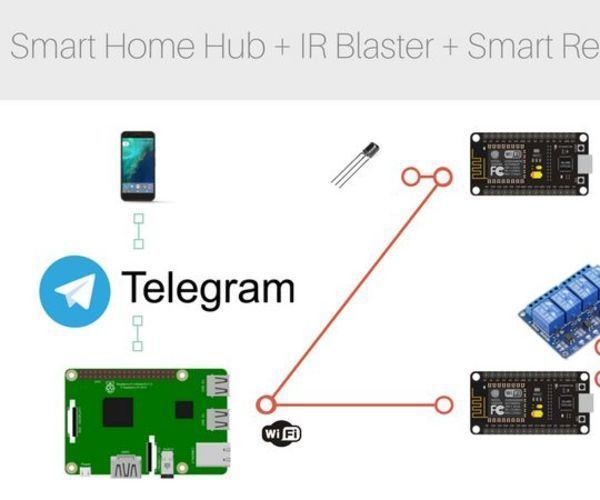
Telebot (Complete Home Automation)
"In this Instructable I'am going to tell you about how to make a complete "HOME AUTOMATION" package using some basic Electronic controllers and some Open source software. This Project will go this way: We will use Raspberry Pi as a Hub for smart home devices. This Hub will be guided by the instructions received from an (Android, Ios or Windows) device with "Telegram" installed in it. The hub will then communicate Over The Air with the NodeMcu. The NodeMcu will then send these signals to Relays and IR sensor according to the assigned GPIOs in the code.The Relays here will help controlling the switches while the IR sensor will be used to control the TV. Also this package includes a security feature named as "CamShot" which will click photos for you whenever a signal is send to it." [...]

Android Controlled Robot Spy Camera
" This interesting but complicated project will cover things from designing building a robot, to advanced configurations in linux (raspberry pi) to building an Android application and controlling the robot. So this being said it's more ambitious then the average projects, but i think you'll have a lot to learn by examining some ideas here or even replicating the entire project. First we'll build the robot using plexiglass, plastic sheets, DC motors with gearboxes and various electronic components. The device will be able to move independently the two front wheels and it will be able to use it's headlight. Then we're going to set up the raspberry pi powering the robot and configure the project and install various dependencies. Then we're going to build and install an android app and use it to control the robot remotely using the camera and a wifi connection." [...]
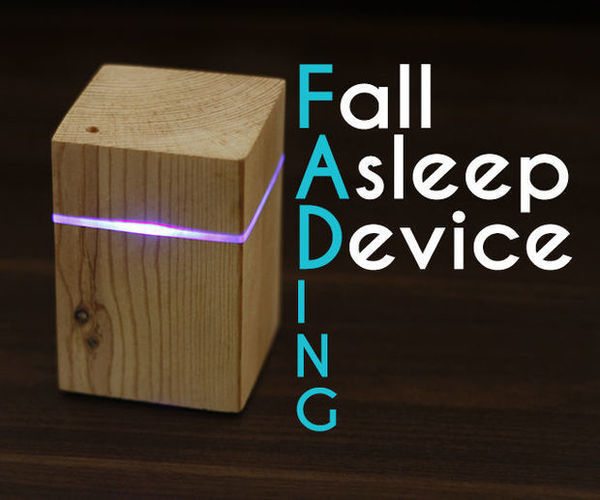
Fading (Fall Asleep Device)
"This device is a gift I have made and offert several times since 2 years. The version I made for this tutorial is the most complete of all because it takes into account the suggestions I've had in the past. I would also point out that English is not my fluent language but i hope to be understandable. There are devices that helps you to wake up or fall asleep "naturally" with light. The device I present helps you fall asleep by synchronizing your breathing with the variations of light intensity emitted by it. Inspire by this https://www.mydodow.com/en but with more control and option on it." [...]
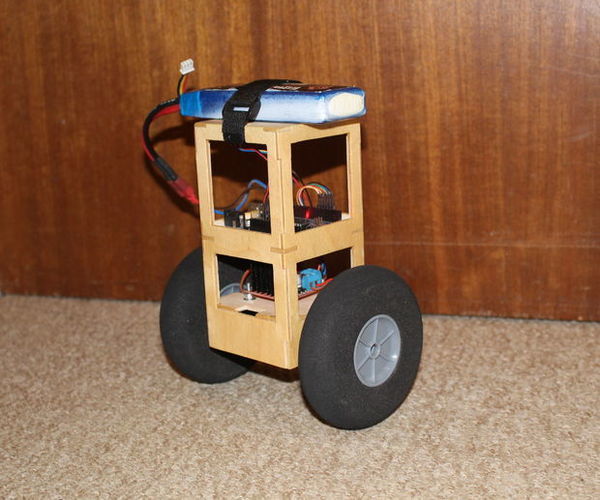
Yet Another Balancing Robot!
"So this is my balancing robot. I have had a look at others on Instructables and decided my version is worth writing up. Sometimes it nice to have a few different versions to looks because there are several ways to achieve this goal! Firstly I am going to state that my programming ability is very poor! I program in a very long-winded basic way, And I generally like to understand what I am doing so dont tend to use librarys. Also this robot is what I would say a Really good starting point its by no ways perfect but all the bits work and improvements to the program will only make it better." [...]
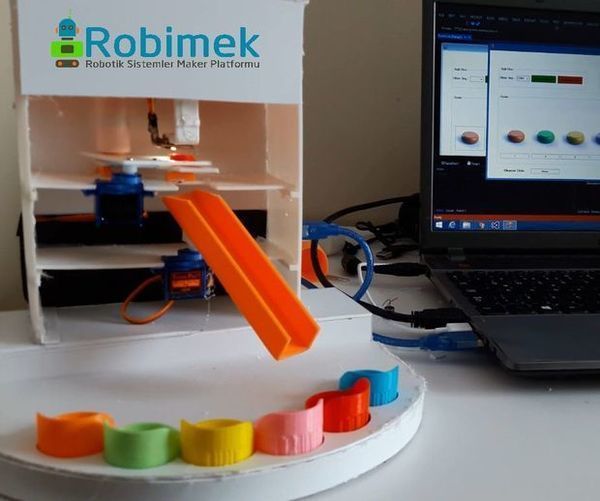
Arduino Color Sorter Project With Pc Control Application
"In this project, I chose the TCS34725 color sensor. Because this sensor performs a more accurate detection than the others and is not affected by the light change in the environment.The product debugging robot is controlled by the interface program I designed in visual basic.The program takes instant data via arduino and prints the amount of products transferred to the containers on the screen. In addition, the system automatically stops when the extraction process is completed. " [...]
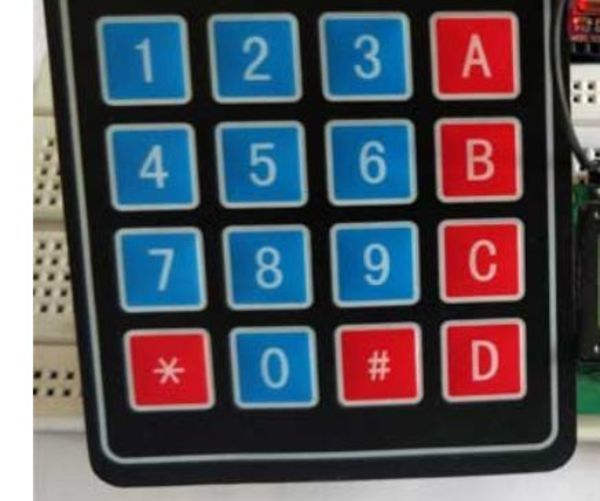
Arduino Calculator Using The Keypad
"This is a projects similar to few others, just a little bit changed and easyer to make! " [...]

ESP8266 Wi-Fi Button - DIY Amazon Dash Button Clone
"In this project you’re going to build an ESP8266 Wi-Fi Button that can trigger any home automation event. This is like a remote control that you can take in your pocket or place anywhere that when pressed sends out an email. It can also be called a DIY Amazon Dash Button clone. " [...]

Joy Robot (Rob Da Alegria) - Open Source 3D Printed, Arduino Powered Robot!
"This project is competing in Instructables Arduino Contest, Design for Kids Challenge and Wheels Contest. Please vote on us! Robots are getting everywhere. From industrial applications to underwater and space exploration. But my favorite ones are those used for fun and entertainement! In this project a DIY robot was designed to be used for entertainment in children's hospitals, bringing some fun to the kids." [...]

Arduino Trash Can Opener
"Today i'm going to show you a simple Trash Can Opener, using Arduino. YOU WILL NEED: 1x Arduino Uno, Due, Mega, Nano... 1x Small Breadboard (optional) 1x Micro Servo 1x Ultrasonic sensor Jumper wires" [...]
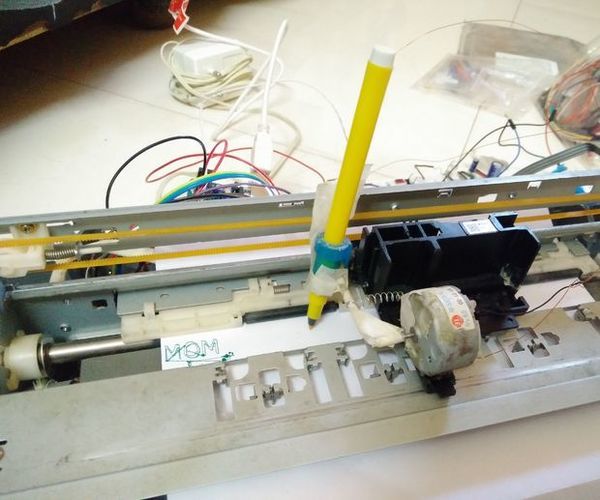
GRBL With H Bridge And DC Motor
"In this instructable I will be showing how you can build a personal X-Y Plotter using simple L293d motor drivers. ie- without Complex Stepper drivers. Warning - Use of H-bridge to drive a stepper is inefficient. features like microstepping cannot be performed. The precision of the sketches will be reduced. " [...]
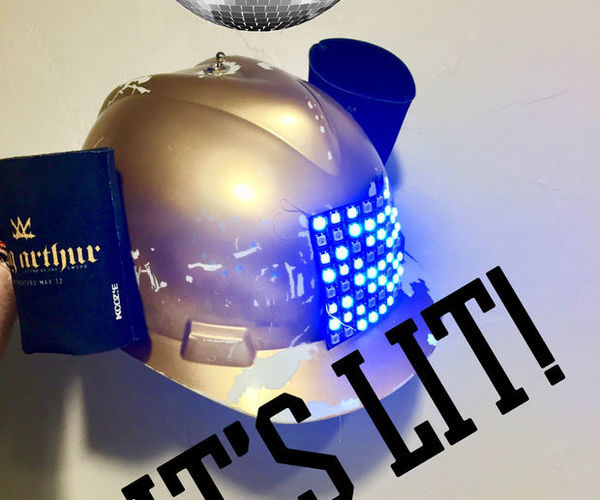
Helm Lit
"In this instructables I'll be showing you how to build headgear with an integrated 8x8 LED display, a.k.a. one of the most lit thing you've seen yet.Let's dive into it! " [...]
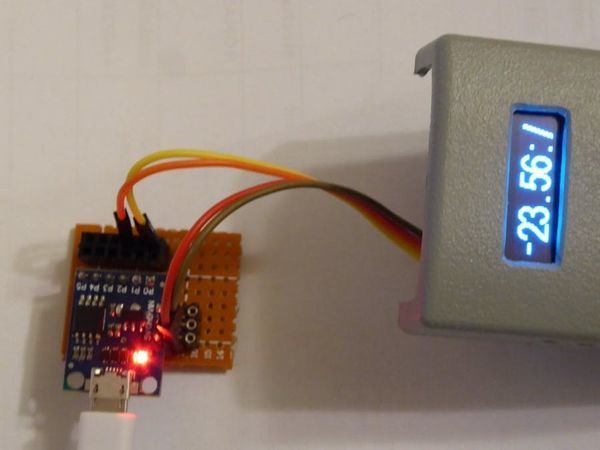
Large fonts on a tiny OLED & ATiny85
"It is very challenging to compress code in small memory micro-controller unit (MCU) such as Digispark ATtiny85, which is offering only 6kB. Suppose you want to attach it to a tiny OLED (128x32 pixels) and make it write easily readable huge fonts (16x32 pixels WxH). And after this feast, you may still want to make the Attiny85 do, more than simply writing something! This means: leave memory available from the 6kB! " [...]
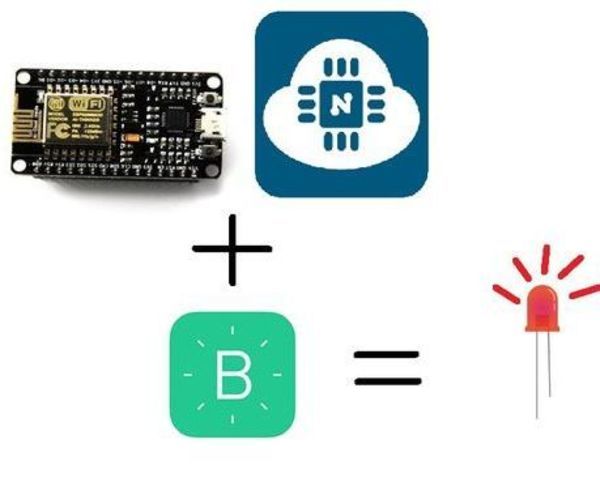
Quadcopter With Nodemcu And Blynk(Without Flight Controller)
"Hello guys.! The search to make drone without a flight controller ends here. I was kinda making drone for my project which involves survillence.I was surfing net overnight to make it work without the flight controller and its was very disappointing that i didnt one.So i decided to make this instructable so its easy for those who will be making drone without flight controller. Blynk is an open-source IOT platform where one can control the things remotely. (Can be even stated as an universal remote).Check out their webpage to know more. Thanks to Blynk.!" [...]

oled earrings
"This year I had a special gift for my girl. Earrings that feature an oled screen with animations of her favorite arcade game, Tetris. The original idea was to have tetris blocks fall from the top of the screen to the bottom and stack up. But in the End I had to settle with a simple scrolling animation of tetris blocks, due to the limited energy budget. It uses a rechargeable lithium coin cell (LIR2032) to power a oled screen and an ATTiny85 micro-controller driving it. Once the power switch is flipped the display is initialized and cleared then the tetris blocks are drawn in a predetermined pattern." [...]
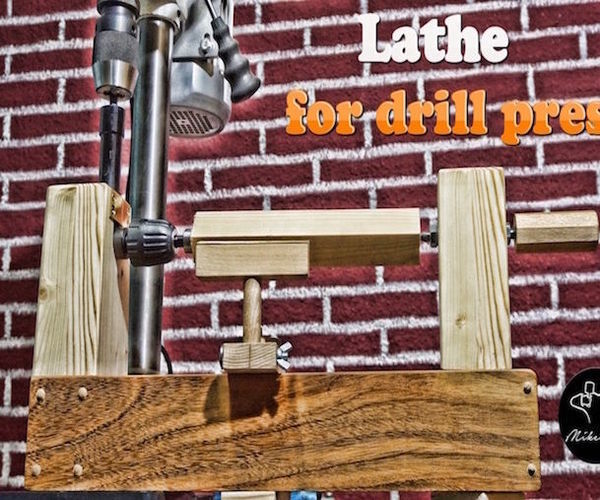
Homemade Lathe For Drill Press
"I always wanted to have a lathe for wood but I don't have much space in my workshop, so I decided to build one myself using my drill press. For this, I used an angle drill adapter and after many tests I saw that the result could be good. The benefit of the angle drill adapter would be the absence of lateral stress on the drill press bearings. If you like the video please Subscribe to my Youtube Channel. I would also apologize for my English as a non-native English speaker some terms are very difficult for me. Forward, Intractable!!" [...]
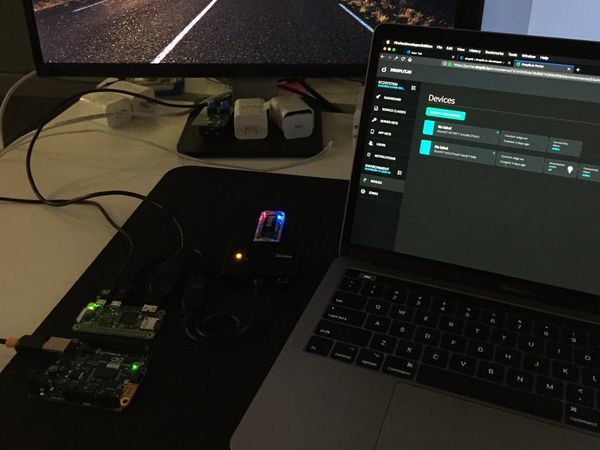
Bluetooth LE IoT Gateway
"Enable a Bluetooth LE IoT network with cloud control using Hologram Nova, Raspberry Pi Zero W and Droplit.io services and software. Build your BLE IoT Application with cloud control and cellular connectivity! Overview This project combines a Raspberry Pi Zero W, Hologram Nova, Bluetooth LE capable peripheral (in this example and Arduino 101) and the Droplit.io cloud, to create a Commercial IoT Application that provides BLE device control through the droplit.io REST API. Using the Droplit.io API provides an abstraction layer by modeling devices as a combination of Service Classes, this allows interoperability with other IoT devices across different connectivity types and protocols. This abstraction layer also provides real-time updates and notifications across subscribed clients, including web, server, and mobile applications using Web Sockets and Web Hooks. The attached repository provides instructions and sample code so that you can build your own BLE IoT Applications using an Open Source edge server application, Droplit.io Edge." [...]

Small Stepper Robot Arm
"This entry is about a small stepper robot arm I made a while ago. In this post, I will first talk a bit about how I built it and what my thoughts were while doing so. After that, I will show some moving footage of what the thing is able to do. A Small Stepper Robot Arm? Yes. It uses stepper motors, it is small, and it is a robot arm." [...]

Xerox Alto's 3 Mb/s Ethernet: Building a gateway with a BeagleBone
"The Alto was a revolutionary computer designed at Xerox PARC in 1973. It introduced the GUI, high-resolution bitmapped displays, the optical mouse and laser printers to the world. But one of its most important contributions was Ethernet, the local area network that is still heavily used today. While modern Ethernets handle up to 100 gigabits per second, the Alto's Ethernet was much slower, just 3 megabits per second over coaxial cable. Even so, the Alto used the Ethernet for file servers, email, distributed games, network boot, and even voice over Ethernet. The Alto's 3 Mb/s Ethernet isn't compatible with modern Ethernet, making it difficult to transfer data between an Alto and the outside world." [...]
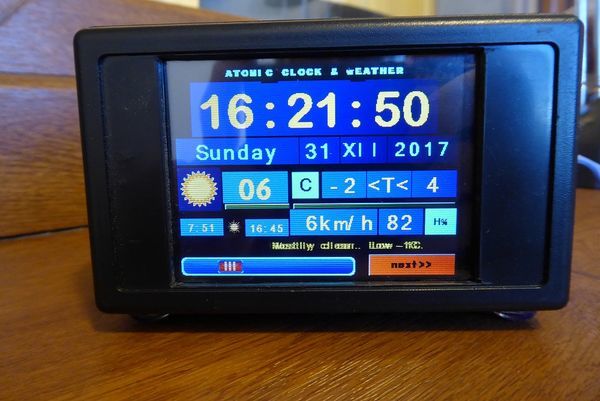
Atomic clock & weather
"Accurate time and weather data are useful for everybody. You can buy a weather station for 25-30 Euros, but only some of them have the time synchronized to an Atomic Clock. Not to speak about the weather: at best there is an outdoor sensor for temperature and humidity. From these information and an atmospheric pressure sensor, it can estimate the forecast weather? Why not let the specialists forecast the weather, and this hour by hour! You only have to ask them, by internet, using you own made device, under Arduino IDE (Integrated Development Environment) ." [...]
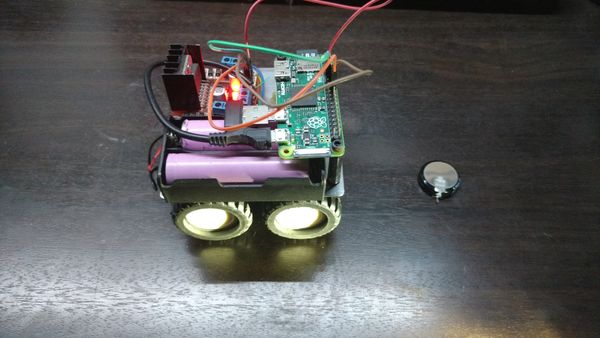
Raspberry Pi Zero WiFi Car
"This project in its current form is a raspberry pi zero based wifi car platform. Although this platform can be expanded into futher projects involving autonomus operation, image recognition this platform currently can be used as a simple keyboard operated car connected over WiFi. " [...]
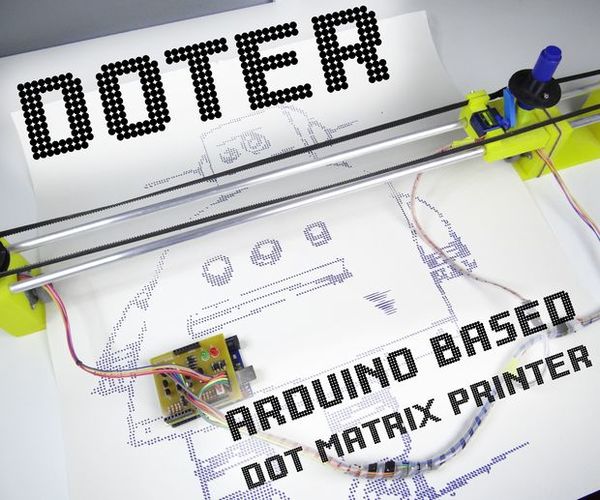
Doter - Huge Arduino Based Dot Matrix Printer
"Hi, welcome in this instructable :) I am Nikodem Bartnik 18 years old maker from Poland. I made a lot of things, robots, devices through my 4 years of making. But this project is probably the biggest when it comes to size. It is also very well designed I think, of course there are still things that can be improved but for me it's awesome. I really like this project, because of how it works, and what can it produce (I like this pixel/dot like graphics), but there is much more in this project than just the Doter. There is story of how I made it, how I came up with an idea for it and why failure was a big part of this project." [...]
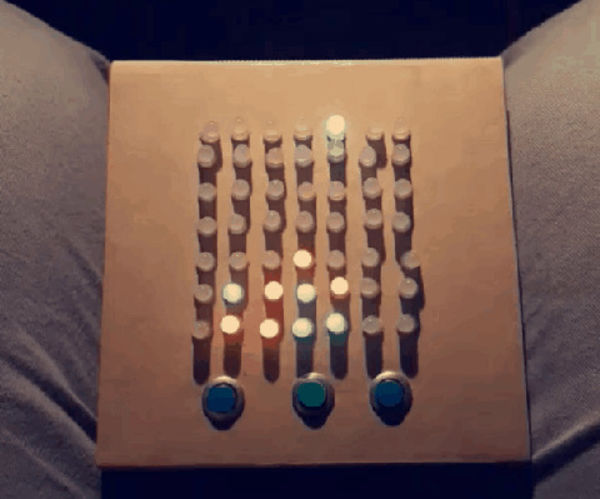
2 Players Connect 4 (Puissance 4)
"Hello Every one ! In this instructable I will be showing you how I made a two players Connect 4 with an arduino nano. RGB Led displays player's pawn and player choose where to place it with buttons. The trick of this instructable is to control a high amount of inputs and outputs : 49 RGB Leds and 3 buttons. I recommend you to read all the steps before to begin your own Connect4. They are lot of tricky parts and you will be blocked if you don't etablished the right protocol." [...]

NeoClock
"This is about building a clock using the fantastic neopixel rings from Adafruit. The fun thing about this clock is that it actually has two rings of neopixels, one for telling the hours and one for the minutes, seconds and milliseconds. The clock keeps perfect time using the DS3234 DeadOn Real Time Clock chip from Sparkfun. Easy to build and fun to modify. My hope is that it will inspire others to build clocks or other art using the neopixel rings. For those of you who want to get all my files in a simple to manage format feel free to download them from my github repository for this project at https://github.com/chrisgilmerproj/neoclock." [...]

OnLight
"OnLight is a smart light connected to the Wi-Fi. It can be controlled via the Blynk app. Various functions are already preprogrammed, e.g. light settings, color picker and strobe light. The case is 3D printed and can be screwed into E-27 sockets or on self-developed mounts. What you need for the start: - Adafruit NeoPixel Ring for Photon - Particle Photon - Case - USB-USB mini cable, solder iron, screws" [...]

Add An Arduino-Based Optical Tachometer To A Cnc Router
"Build an optical RPM indicator for your CNC router with an Arduino Nano, an IR LED/IR Photodiode sensor and an OLED display for less than $30. I was inspired by eletro18's Measure RPM - Optical Tachometer Instructable and wanted to add a tachometer to my CNC router. I simplified the sensor circuit, designed a custom 3D-printed bracket for my Sienci CNC router. Then I wrote an Arduino sketch to display both a digital and analog dial on an OLED display A few simple parts and a couple of hours of your time, and you can add a digital and analog RPM display to your CNC router. Here's the parts list available for 2-day shipping. You can probably source the parts for less if you're willing to wait longer." [...]

How a Voltage Regulator Works: LM7805
"Voltage regulators are one of the first electronic components you get introduced to as a hobbyist. Really useful when starting out, it simply takes a voltage that is too high, and reduces it down to a set voltage that you want, usually defined by the component. Solves the problem of having batteries or power supplies being a different voltage to the thing you are powering (such as your Arduino), and at as little as 50p from ebay they are easily acquired. Sounds like a great solution, but there is an issue, they are terribly inefficient. They are known to get very hot when used at high currents, and often need hefty heatsinks to stop the magic smoke from being released. To demonstrate why they get so hot we need to think about what happens during use." [...]
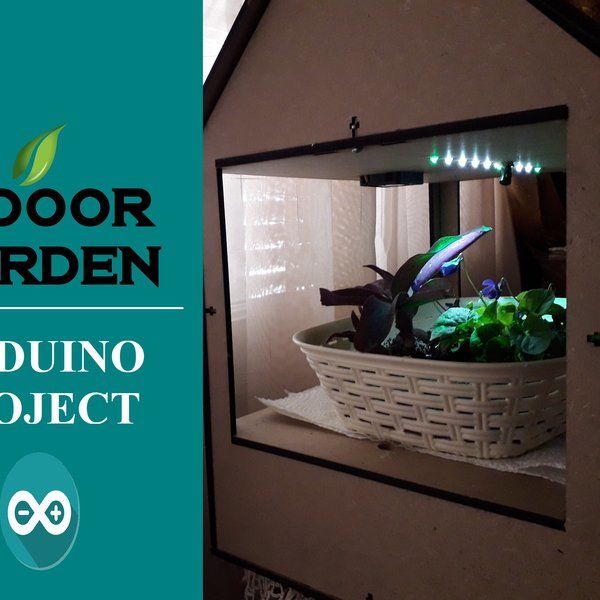
Arduino Indoor Garden
"Gardening in the modern age means making things more complicated and arduous, with electrons, bits, and bytes. Combining microcontrollers and gardening is a really popular idea. I think that’s because gardens have very simple inputs and outputs that are easy to wrap your head around. I guess people (myself included) see a notoriously simple and relaxed hobby and can’t help but feel compelled to overcomplicate it. In this project I will show you how to build a simpler version of Indoor garden using Arduino Dev board. I’m providing a full step-by-step guidance to show you how to make your own beautiful garden, and I'm explaining in details both hardware and software parts in order to turn this guidance the simplest way that leads you to try your own skills in electronic making." [...]
That's all Folks!


